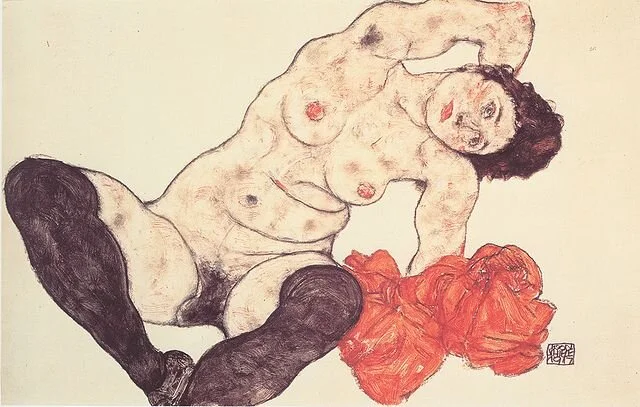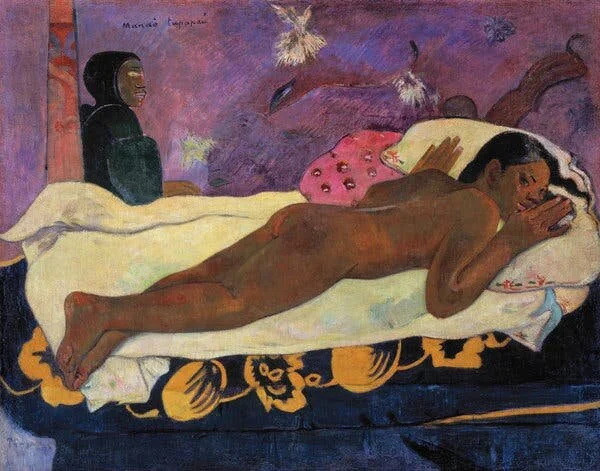Nude Women in Art
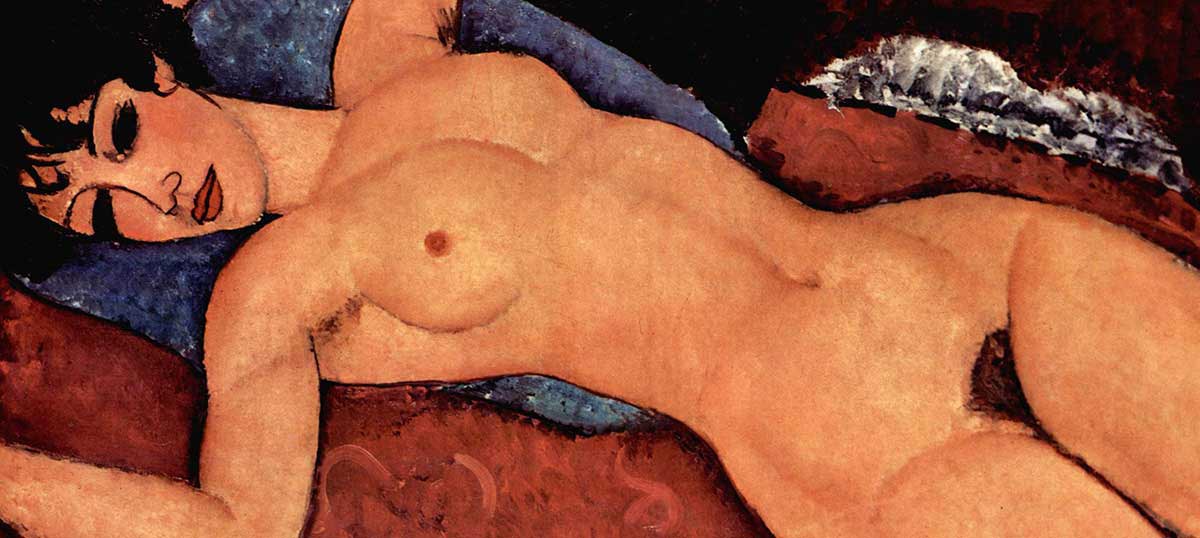
Amedeo Modigliani, 1917, Collection of Liu Yiqian

John French Sloan
1927

Edouard Manet, 1863, Realism, Musée d'Orsay, Paris, France
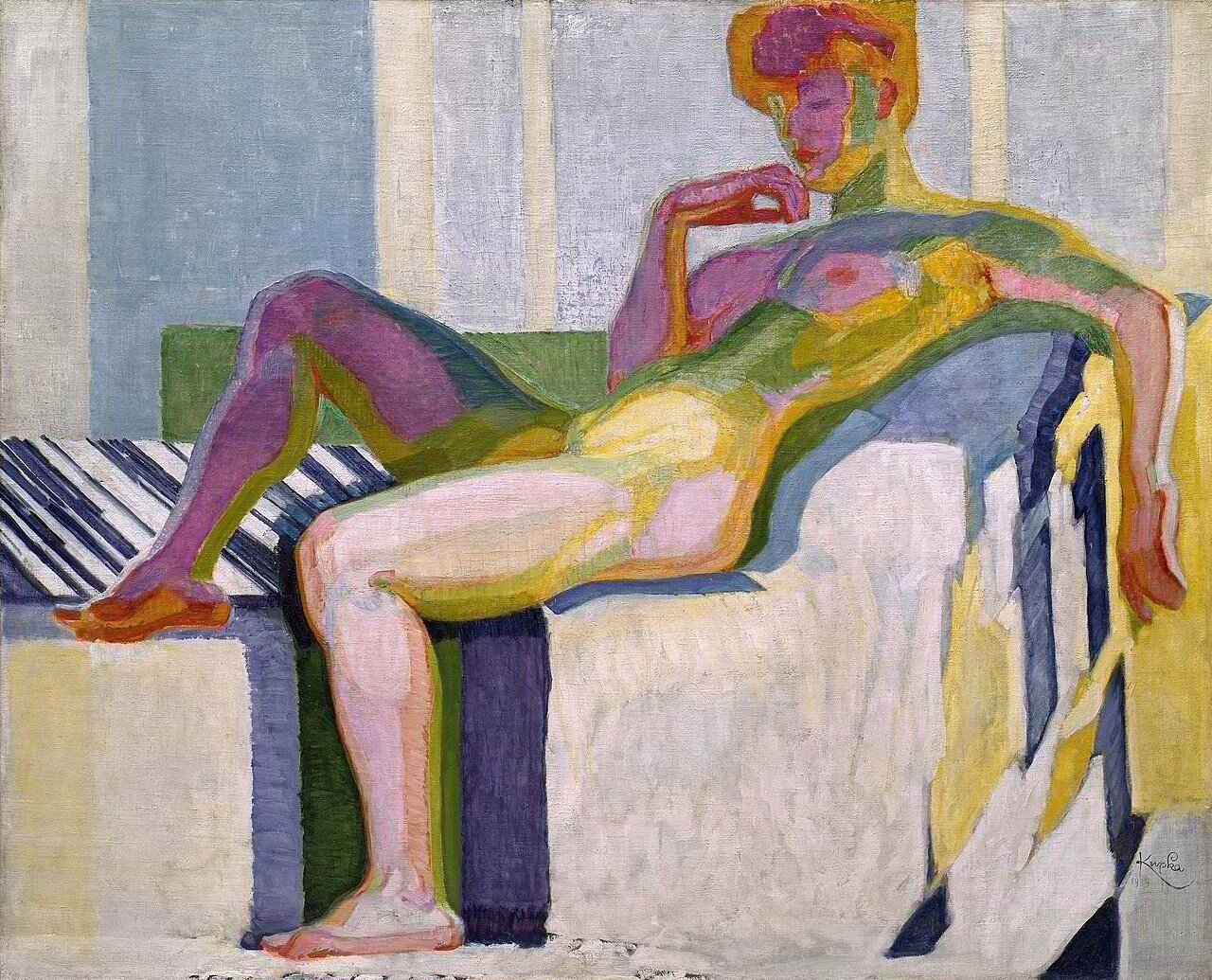
František Kupka, 1909-10, Solomon R. Guggenheim Museum, New York Gift, Mrs. Andrew P. Fuller, 1968
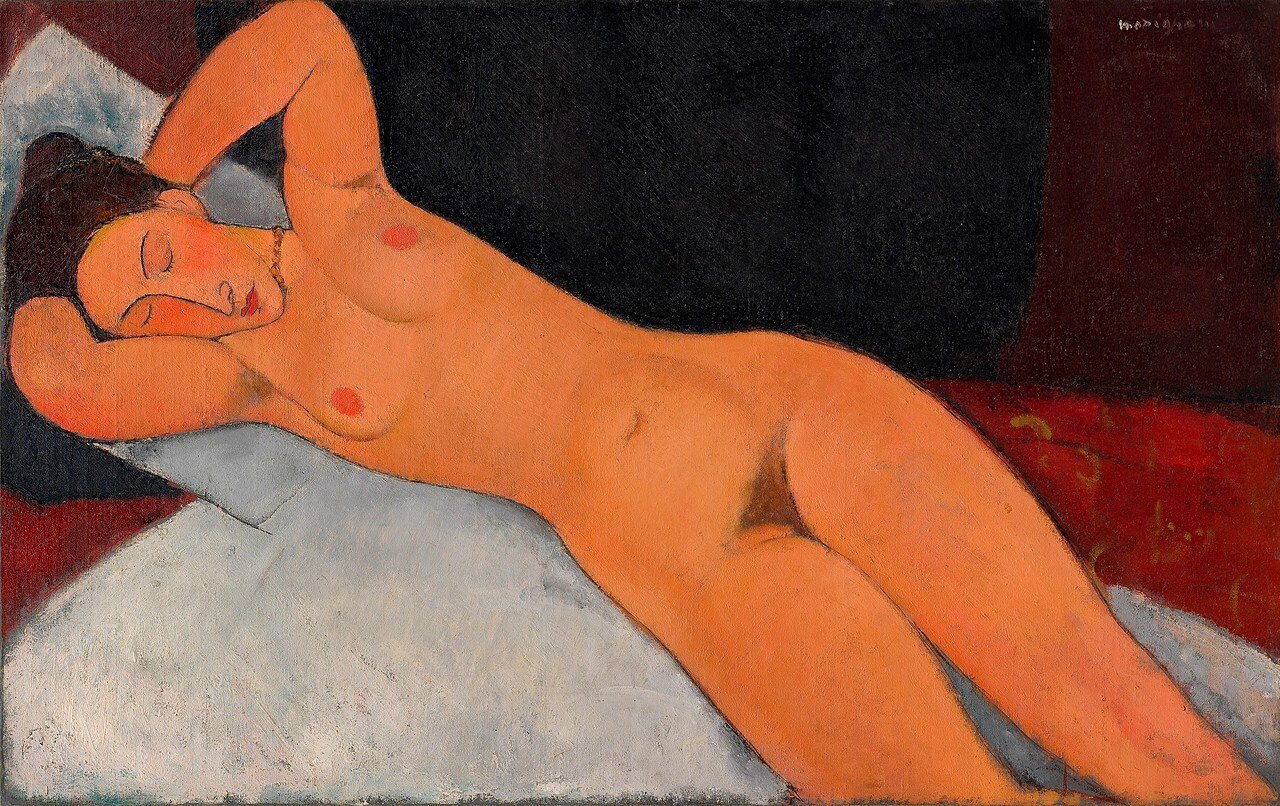
Amedeo Modigliani, 1917, Solomon R. Guggenheim Museum, New York, Solomon R. Guggenheim Founding Collection, By gift
"When Amedeo Modigliani moved from Italy to Paris in 1906, the leading artists of the avant-garde were exploring the forms and construction of “primitive” objects. Inspired by Paul Gauguin’s directly carved sculptures, which were exhibited in a retrospective that year, Constantin Brancusi, André Derain, Henri Matisse, and Pablo Picasso began to make archaizing stone and wood sculptures. Brancusi, with whom Modigliani developed a close friendship, exerted a strong influence on the Italian; this is particularly obvious in his attempts at carving between the years 1909 and 1915, when he made idol-like heads and caryatids with monumental and simplified forms.
Modigliani’s sculptural concerns were translated into paint in Jeanne Hébuterne with Yellow Sweater, in which he portrayed his young companion as a kind of fertility goddess. With her highly stylized narrow face and blank eyes she has the serene countenance of a deity, and the artist’s emphasis on massive hips and thighs mimics the focus of ancient sculptures that fetishize reproduction. Both this work and Nude, with their simplified, elongated oval faces, gracefully attenuated noses, and button mouths, suggest the artist’s interest in African masks.
Modigliani painted the human figure almost exclusively and created at least 26 reclining female nudes. Although the impact of Modernist practice on his art was great, he was also profoundly concerned with tradition; the poses of Nude and similar works echo precursors by Titian, Goya, and Velázquez. Nevertheless, Modigliani’s figures differ significantly in the level of raw sensuality they transmit. His nudes have often been considered lascivious, even pornographic, in part because they are depicted with body hair, but perhaps also due to the artist’s reputation for debauchery. His nickname, Modi, rhymes with the French word maudit (accursed), a name he very likely acquired because of his lifestyle. Modigliani died of tuberculosis and complications probably brought on by substance abuse and hard living. The tragic fact that Jeanne Hébuterne, pregnant with their second child, committed suicide the next day has only contributed to the infusion of romantic speculation concerning Modigliani’s work."
Jennifer Blessing

Amedeo Modigliani, 1917, Expressionism, Museum of Modern Art (MoMA), New York City, NY, US

Jules Pascin, 1908, Expressionism
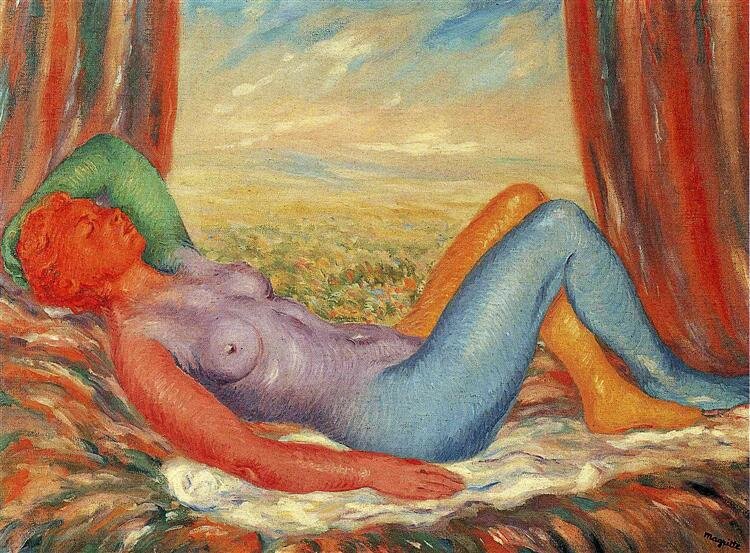
Rene Magritte, 1943, Carcassonne, France, Surrealism: Royal Museums of Fine Arts of Belgium, Brussels, Belgium
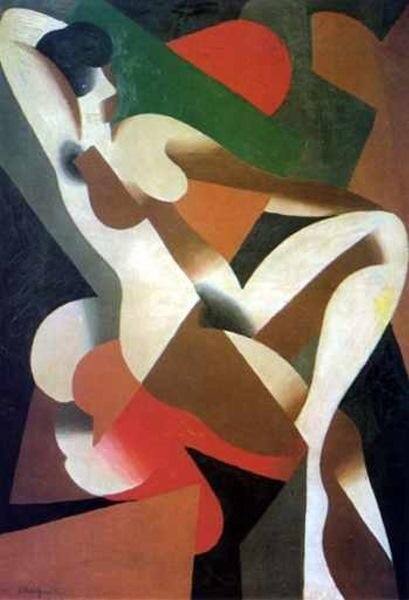
Rene Magritte, 1923; Brussels, Belgium, Cubism
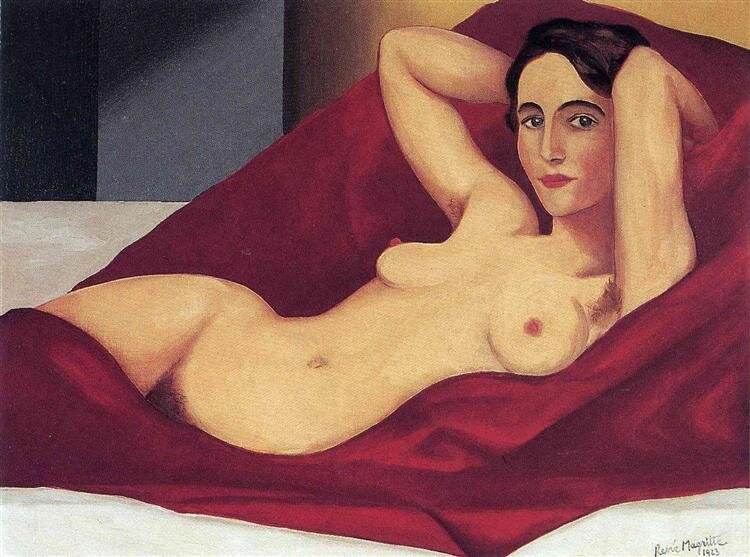
Rene Magritte, 1925; Brussels, Belgium, Cubism
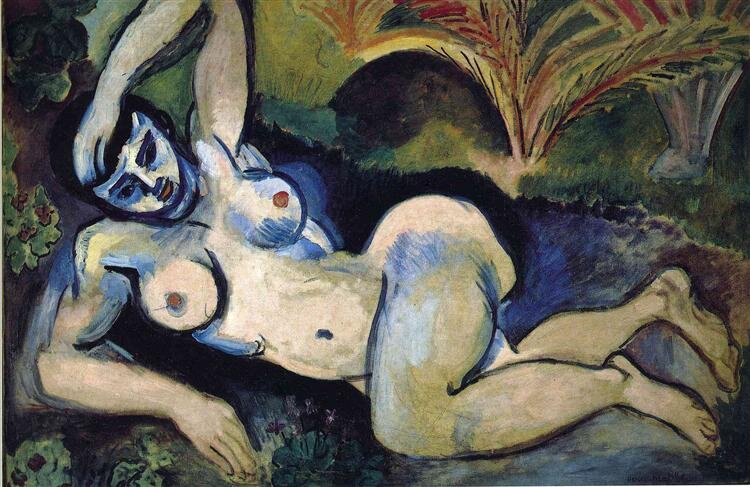
Henri Matisse
1907
Baltimore Museum of Art (BMA), Baltimore, MD, US
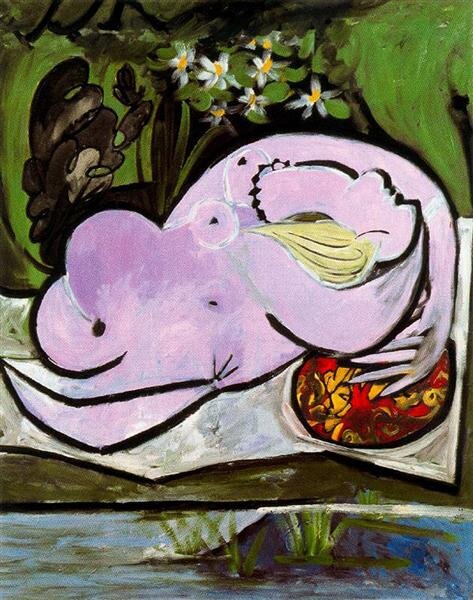
Pablo Picasso,Musée Picasso, Paris, France1934, Surrealism
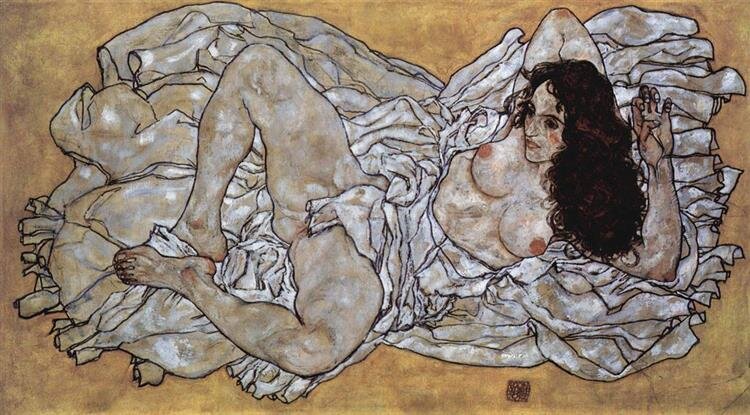
Egon Schiele, 1917, Leopold Museum, Vienna, Austria
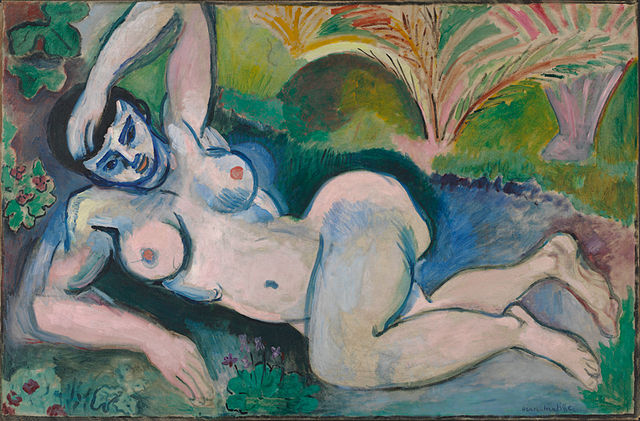
Henri Matisse, 1907

Lucian Freud
1972-73
Tate Modern, London, UK
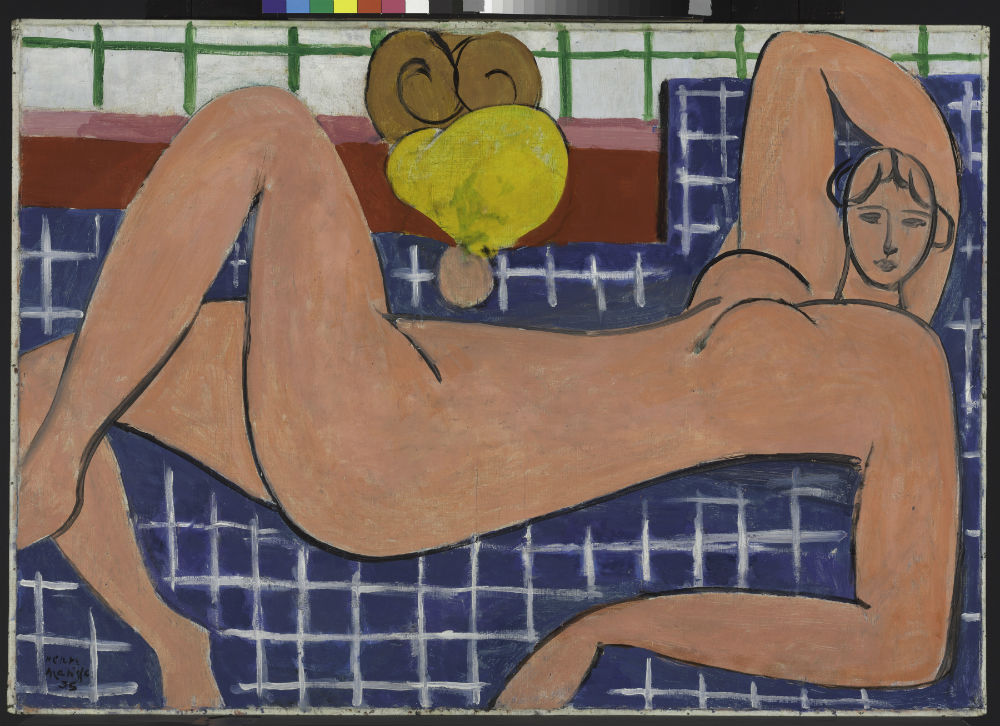
Henri Matisse, San Antonio Museum of Art
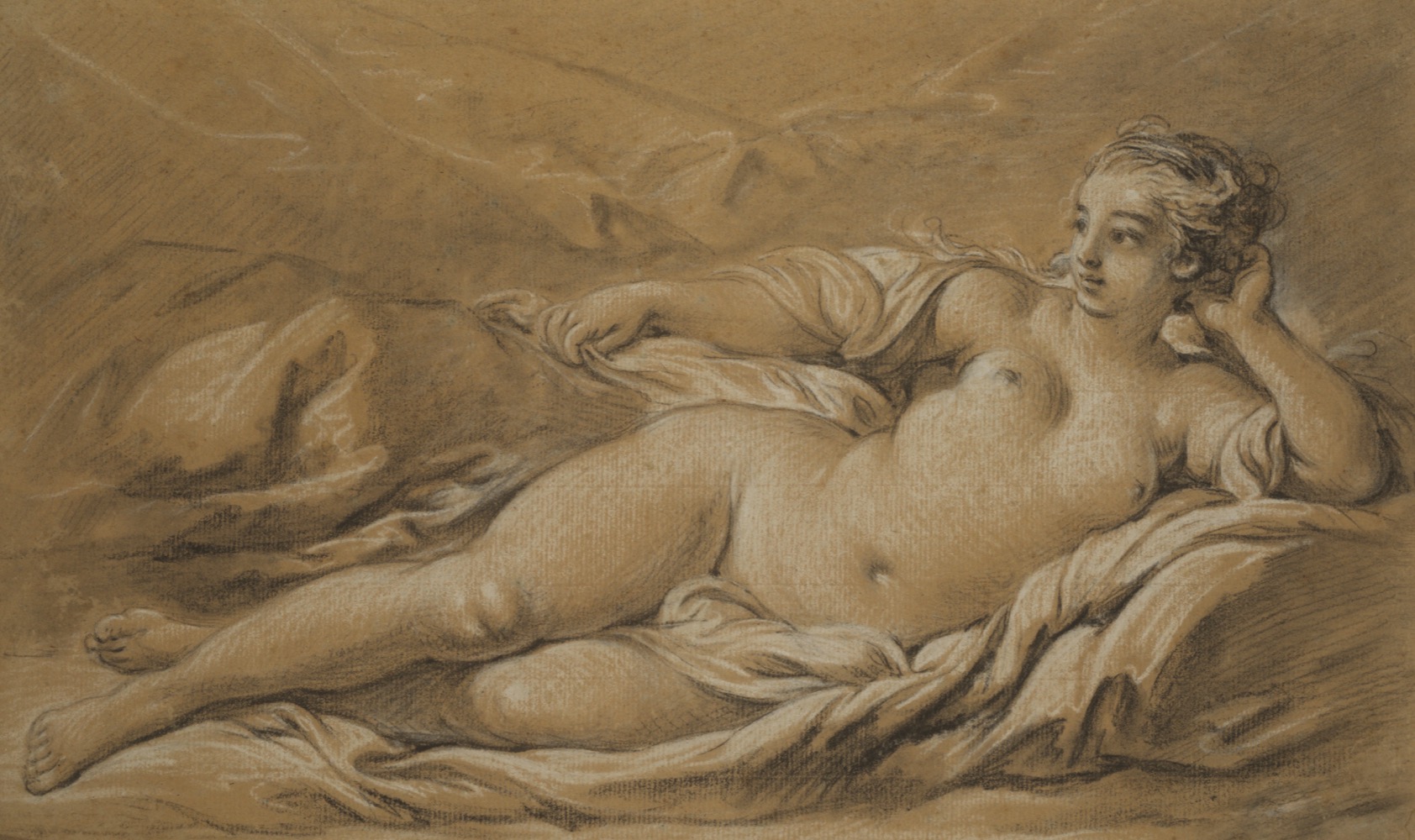
François Boucher (1703-1770), Musée de Beaux Arts Montréal

Cindy Sherman, 1992, Feminist Art
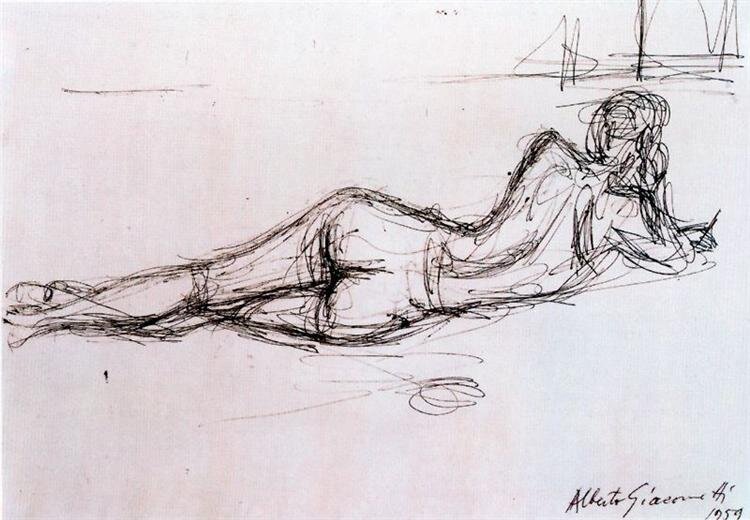
Alberto Giacometti, 1959
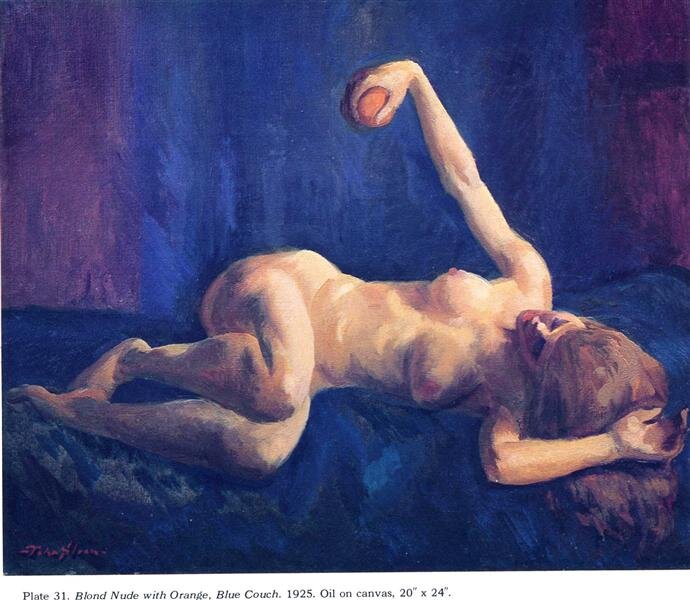
John French Sloan
1925
New Realism
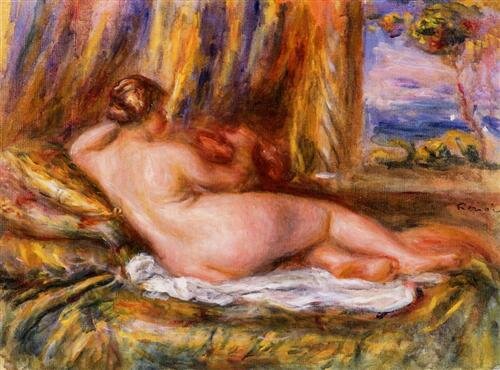
Pierre-Auguste Renoir
1850-1860
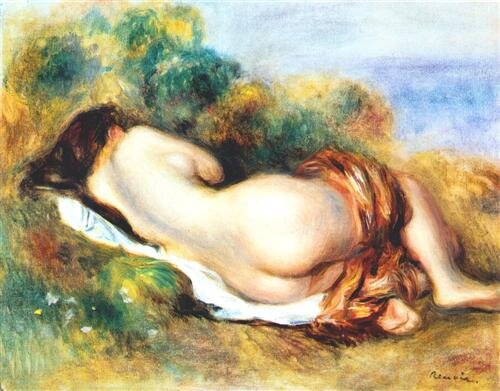
Pierre-Auguste Renoir
1890
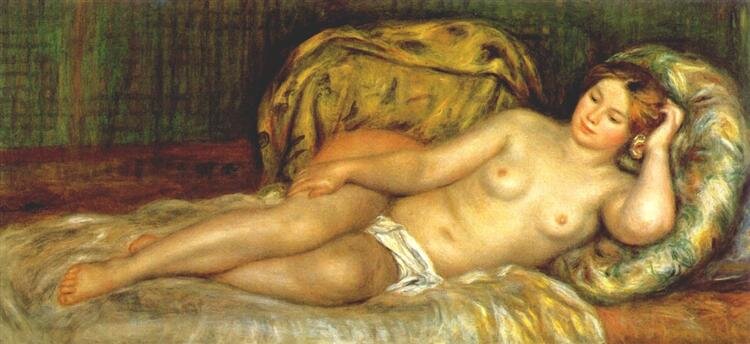
Pierre-Auguste Renoir
1907
Musée d'Orsay, Paris, France
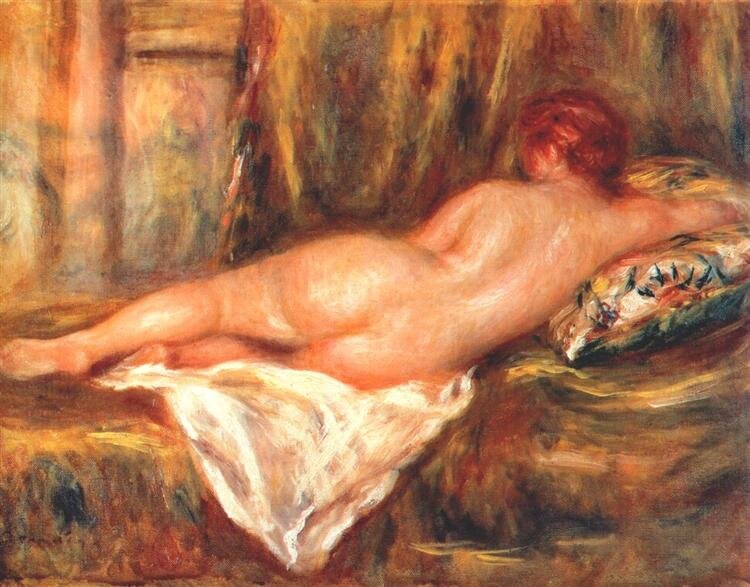
Pierre-Auguste Renoir
c.1909
Musée d'Orsay, Paris, France
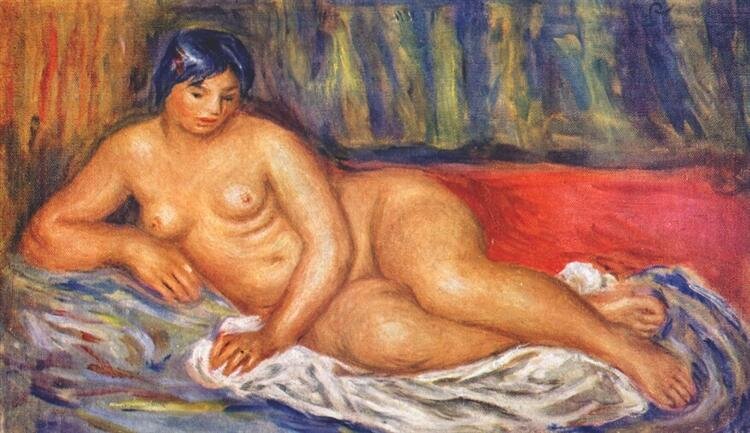
Pierre-Auguste Renoir
1917
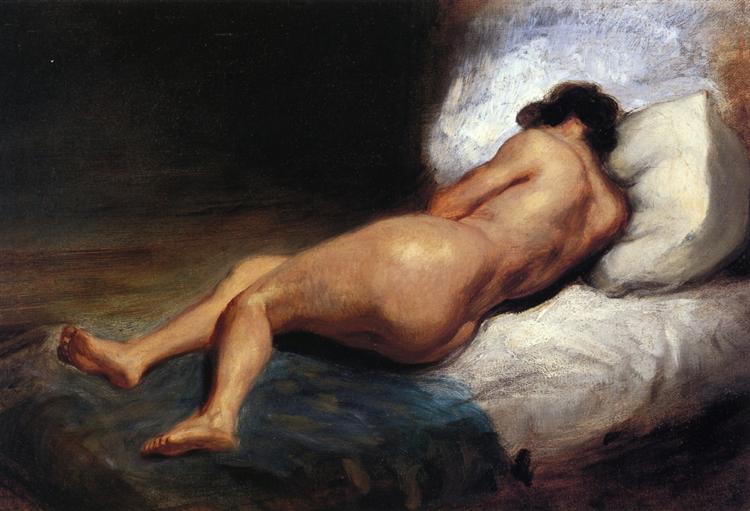
Eugene Delacroix
1824
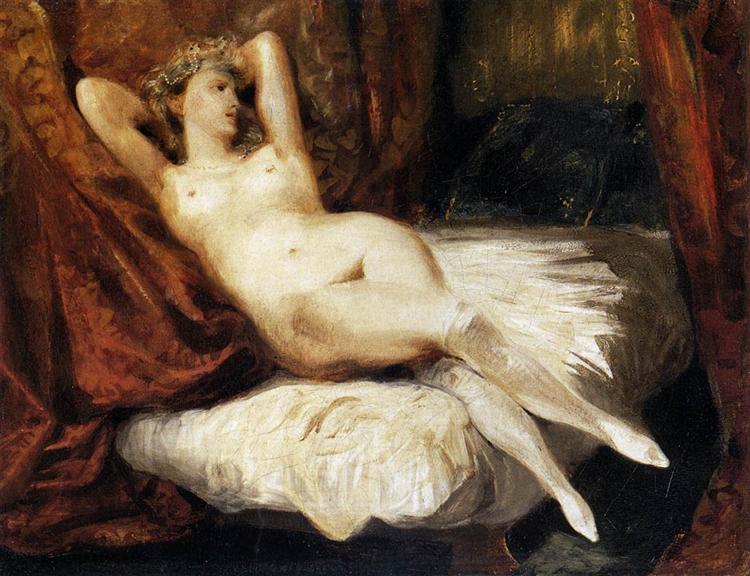
Eugene Delacroix
1825-1826
Louvre, Paris, France
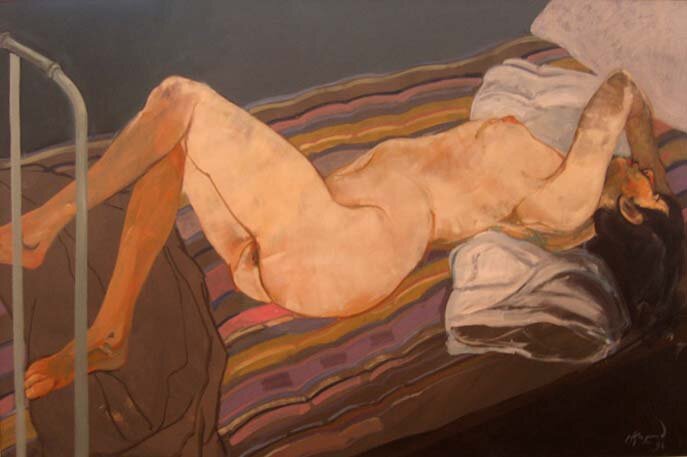
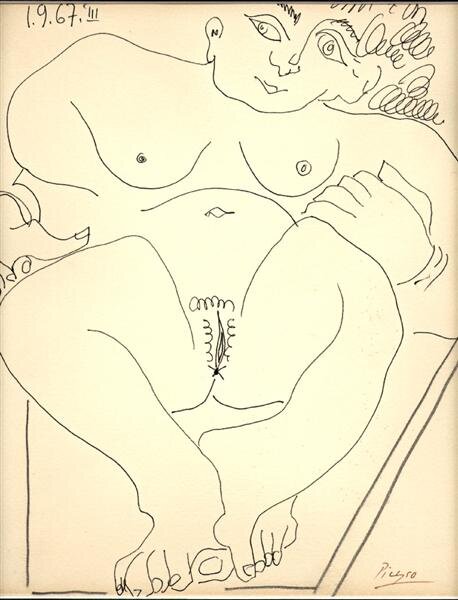
Picasso, 1967

Picasso, 1955
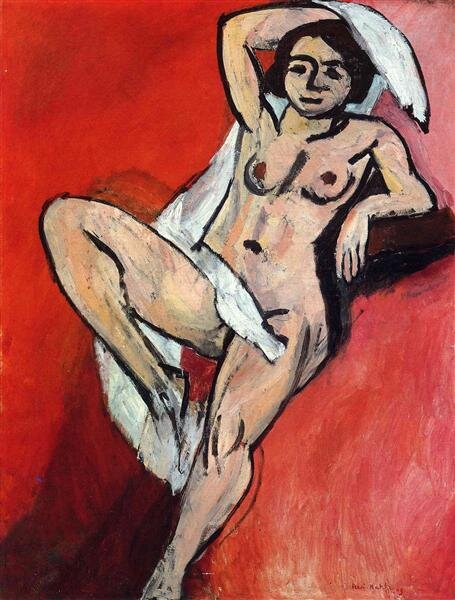
Henri Matisse, 1909


Egon Schiele, 1912, Vienna, Austria
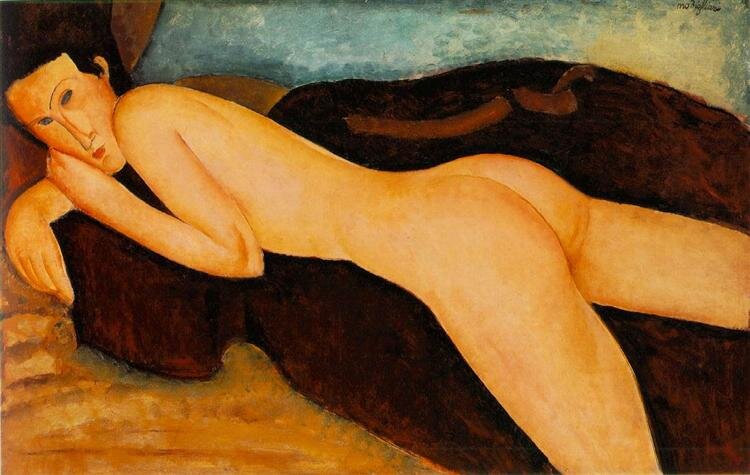
Amedeo Modigliani, 1917, Expressionism, Barnes Foundation, Lower Merion, PA, US

Amedeo Modiglian, 1916, Expressionism, E.G. Bührle Foundation, Zürich, Switzerland
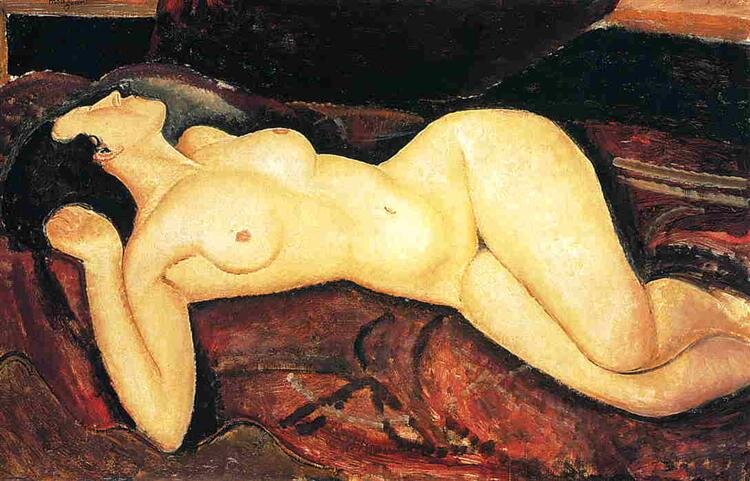
Amedeo Modigliani, 1917, Expressionism
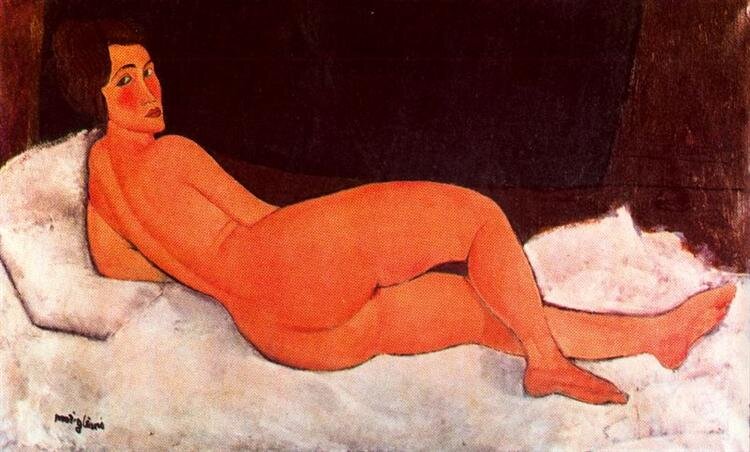
Amedeo Modigliani. 1917

Amedeo Modigliani, 1917, Expressionism, Allen Memorial Art Museum (AMAM), Oberlin, OH, US
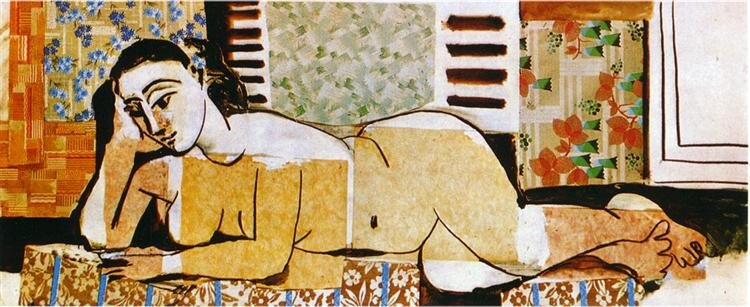
Pablo Picasso, 1955, Expressionism
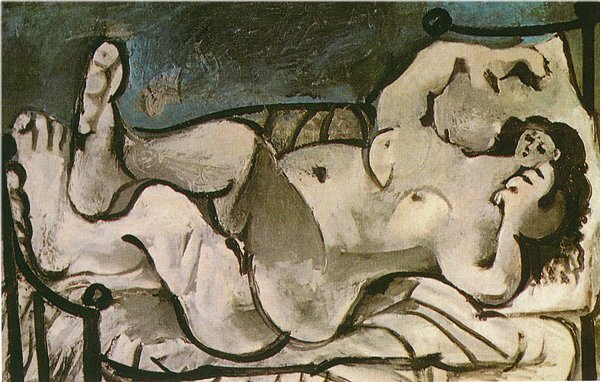
Pablo Picasso, 1964, Expressionism

Max Beckmann, 1929, Expressionism
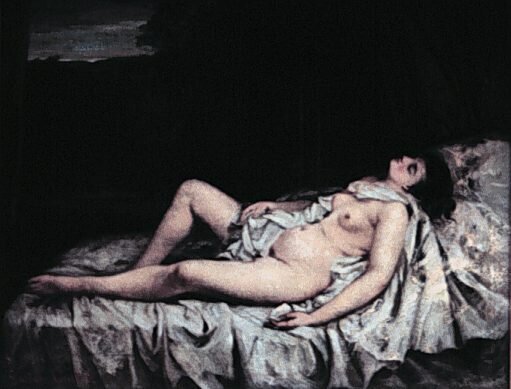
Gustave Courbet, Realism
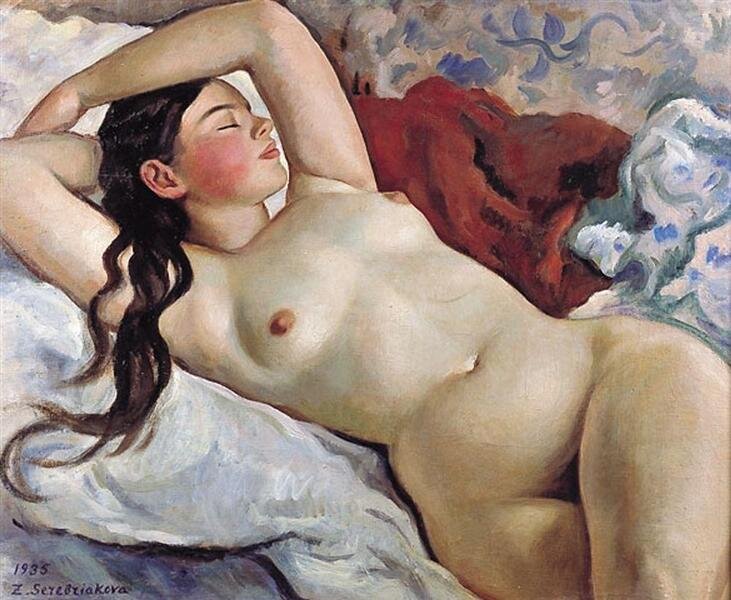
Zinaida Serebriakova, 1935, Art Deco
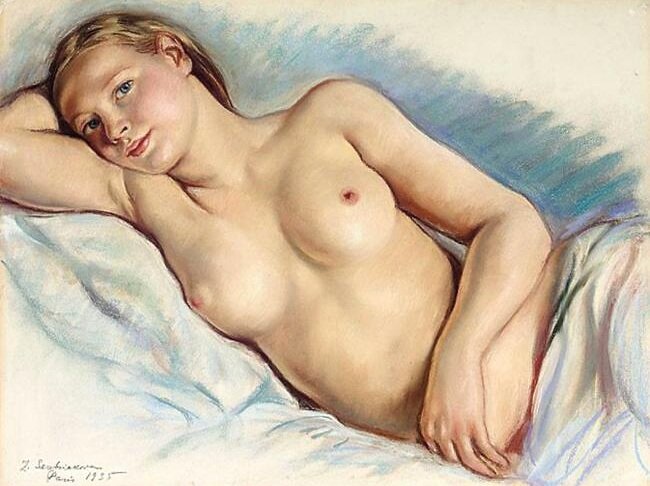
Zinaida Serebriakova, 1935, Art Deco
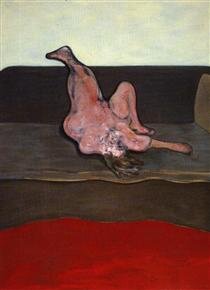
Francis Bacon, 1961
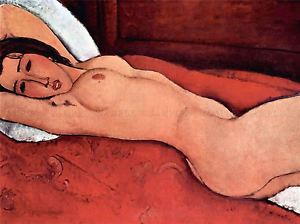









































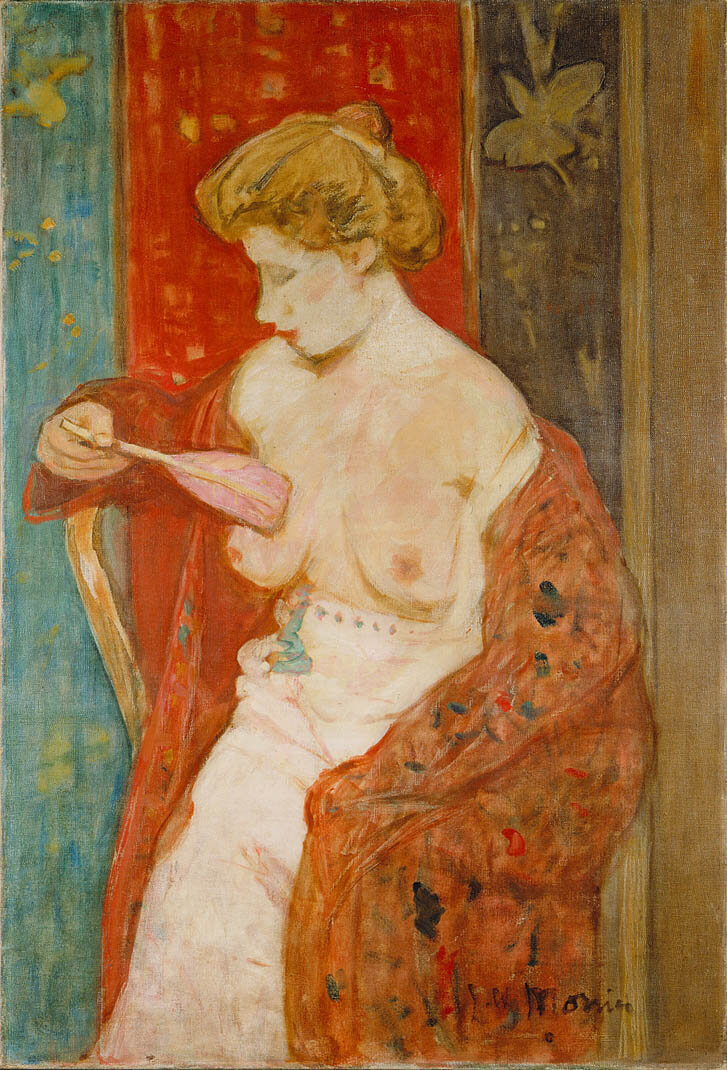
Musee des Beaux Arts de Montreal
James Wilson Morrice
Montreal 1865 – Tunis 1924
About 1911
Oil on canvas
81.2 x 54.5 cm
F. Eleanore Morrice Bequest, inv. 1981.65
In 1911, Morrice shocked the critics with a nude, and he told a friend of his fascination with the French painter Pierre Bonnard, whose recent works he had seen at Galerie Bernheim-Jeune in Paris. Three studies are known of a completely nude young blonde woman seen from the back – recalling nudes by the French painter – as well as this half-dressed frontal Nude with a Feather.
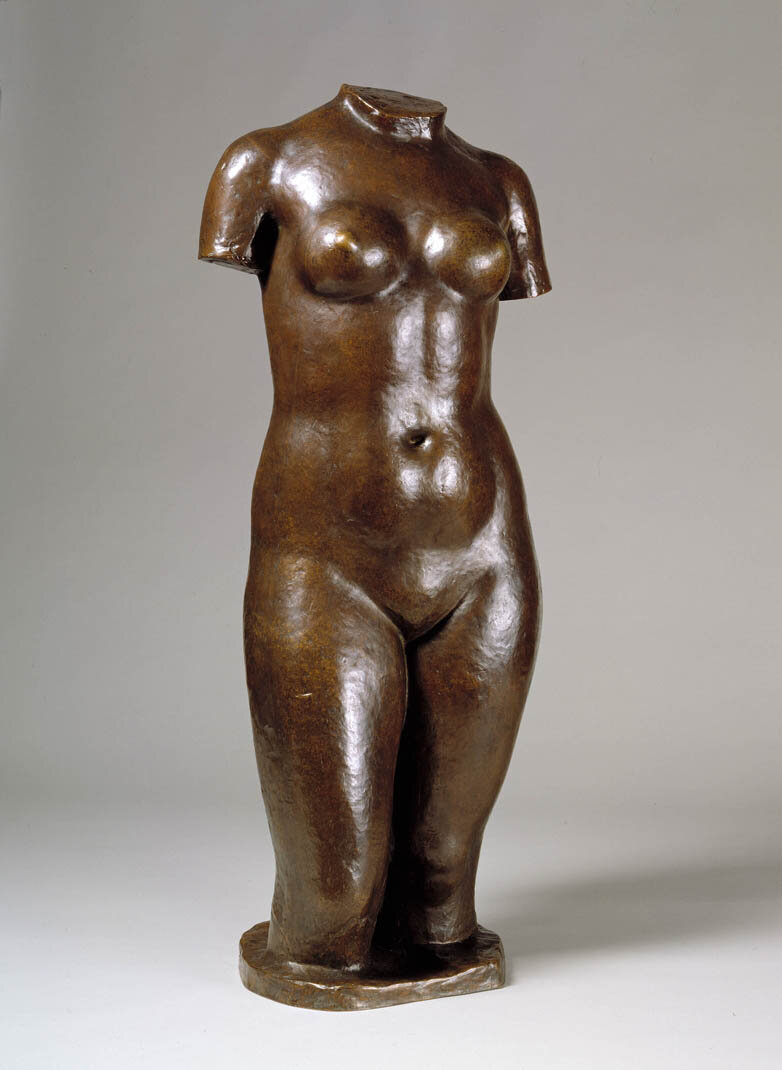
Musee des Beaux Arts de Montreal
Aristide Maillol
Banyuls-sur-Mer, France, 1861 – Perpignan, France, 1944
Torso of a Young Woman
1935
Bronze, 1/1
97 x 32.5 x 27.8 cm
Cast Alexis Rudier, Paris
Purchase, inv. 1949.1016
Maillol was born in the countryside and loved the land, endlessly depicting it. He was trained as a painter and learned from the Nabis how to simplify planes. He aimed at purity of line. As his eyesight began to fail around the turn of the century, he devoted himself almost exclusively to sculpture. His work in that field embodies the “return to style,” the revival of a classical quality. Critics often compared Maillol to Rodin: the one tormented, the other calm, and yet both modellers, lovers of the female body and admirers of ancient Greek sculpture. However, where Rodin fragmented his shapes, contorting and varying them, Maillol constructed, stabilized and refined his material. Always working from the trunk outwards, he pruned the limbs, producing rounded, fruit-like, fecund shapes. There is no story behind the image: it is always the same high-breasted, round-hipped woman. This bronze is a single edition made under Maillol’s supervision after his plaster model of about 1932 (Indiana University Art Museum, Bloomington).
© Estate of Aristide Maillol / SOCAN (2020)
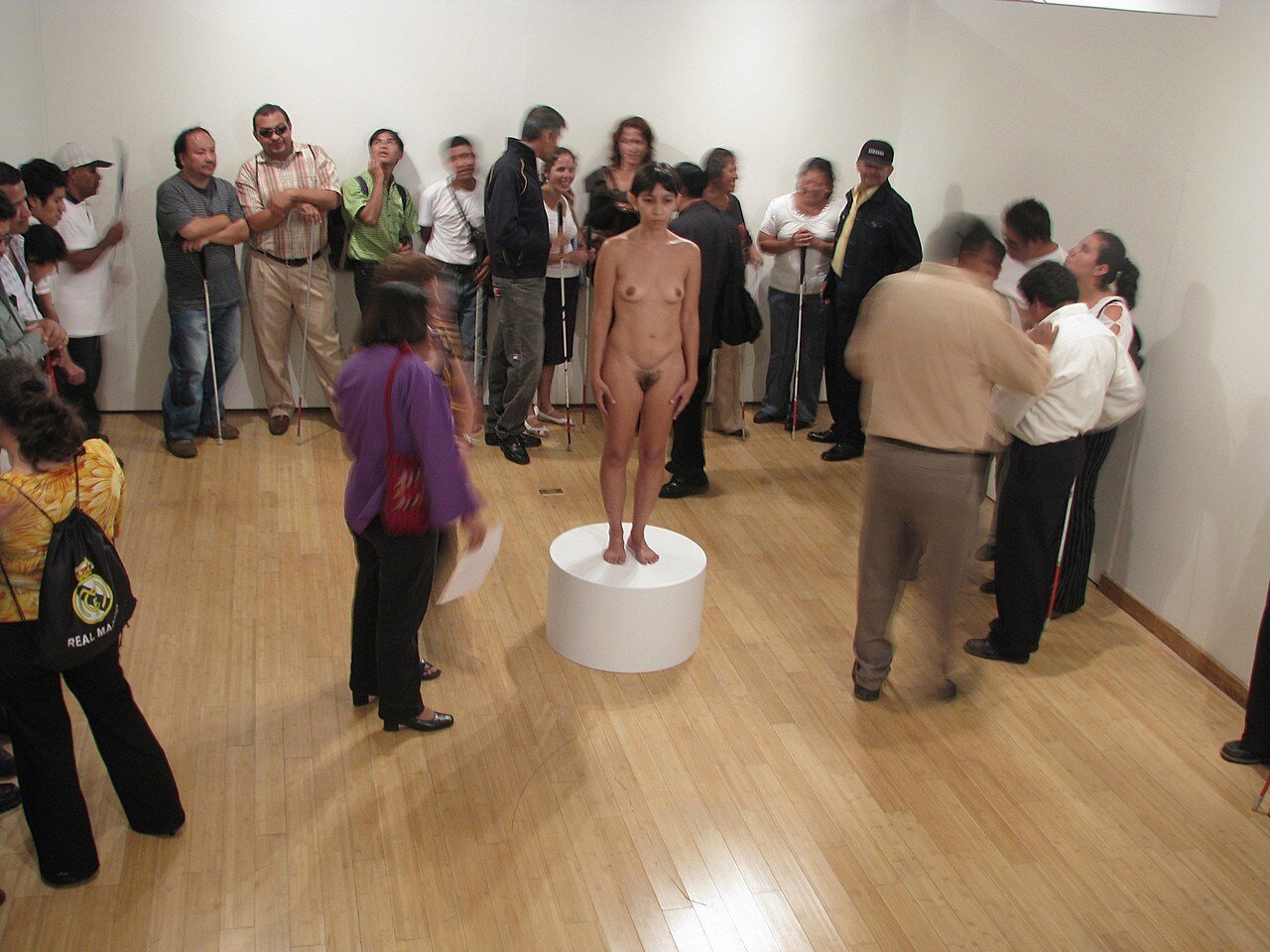
Regina José Galindo, 2010, Solomon R. Guggenheim Museum, New York Guggenheim UBS MAP Purchase Fund, 2014
MEDIUM: Digital color video, with sound, 17 min., 2 sec.
"This video, which documents a performance by the artist, is a meditation on human relations and perception. Regina José Galindo is shown completely nude and standing on a pedestal as if she were a sculpture. Though seemingly inviting of voyeurism, the tone of the work shifts dramatically as the gallery fills with an audience of blind people, who gradually begin to move their hands over the artist’s body with a mix of curiosity and mockery. Here, touch replaces sight as the primary way of knowing the world, and the work offers a metaphor for the revelatory capacity of art and the possibility of contact between subject and object, self and other."

Regina José Galindo, 2013, Solomon R. Guggenheim Museum, New York Guggenheim UBS MAP Purchase Fund, 2014
MEDIUM: Digital color video, with sound, 33 min., 30 sec
"In 2012, José Efraín Ríos Montt, the former President of Guatemala, was accused of genocide and crimes against humanity; Regina José Galindo’s video is a haunting reinterpretation of the atrocities recounted during his trial. Tierra begins with the artist standing naked in a verdant field, the tranquility of which is shattered by an earth-moving machine. Here, Galindo alludes to the incident in which innocent citizens were murdered and cold-heartedly buried in a bulldozer-dug mass grave. The stark contrast between the machine’s huge, armored bulk and the artist’s vulnerable body captures the injustice of Montt’s regime, while the abyss that grows around her serves as a poignant symbol of the despair and alienation born of political violence in general, and Montt’s post-conviction acquittal in particular."
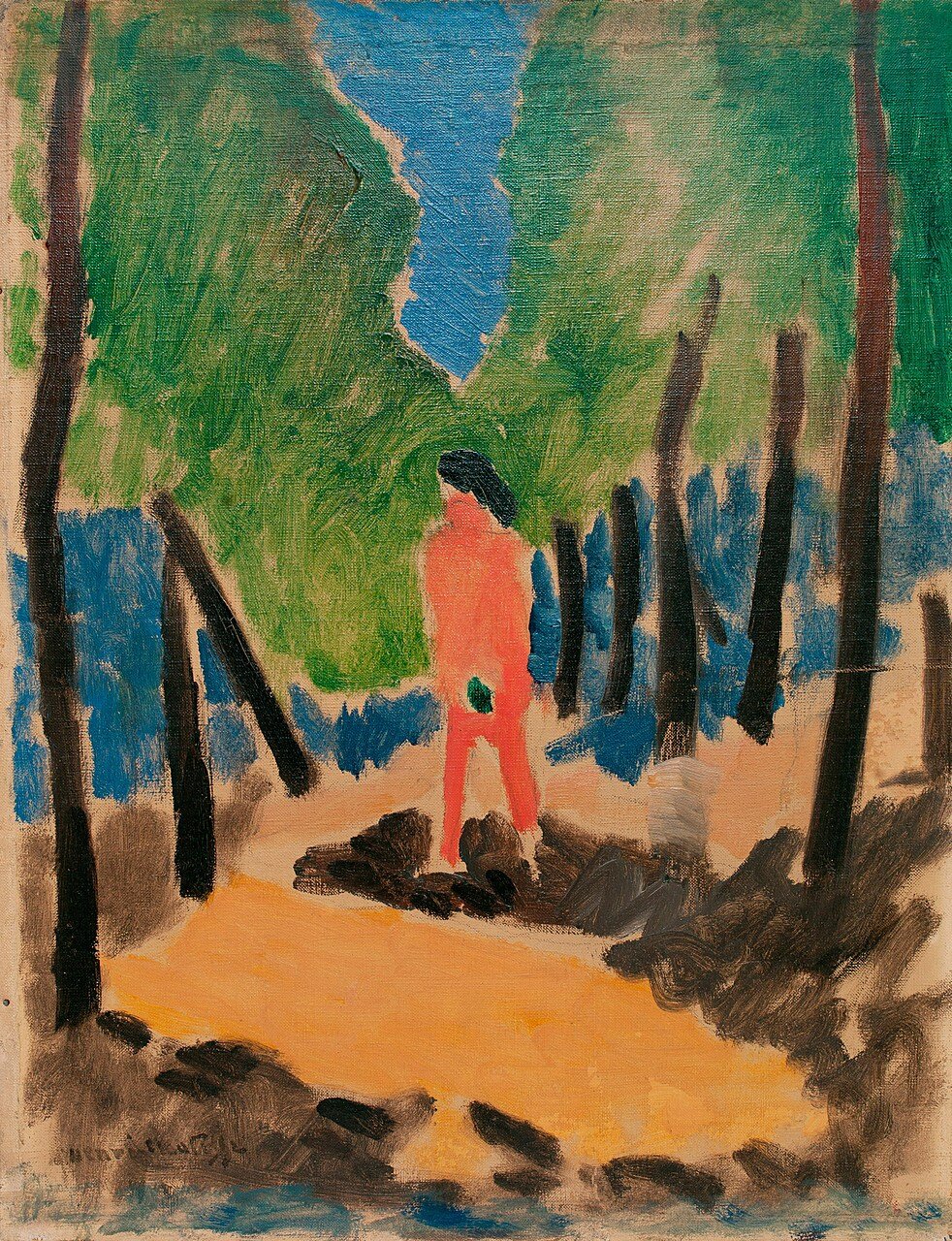
Henri Matisse, 1909, Solomon R. Guggenheim Museum, New York
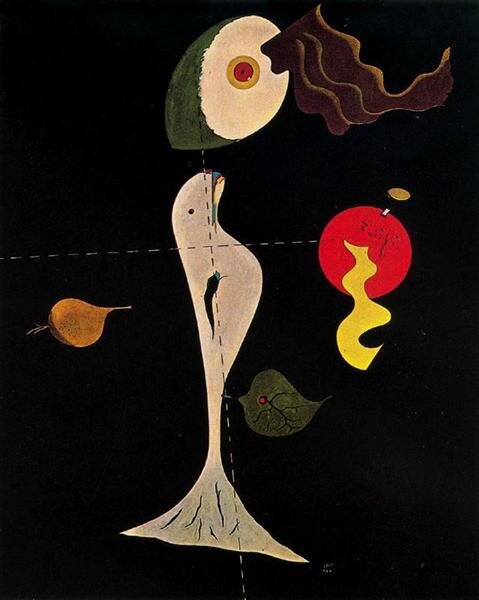
Joan Miro
1926
Surrealism
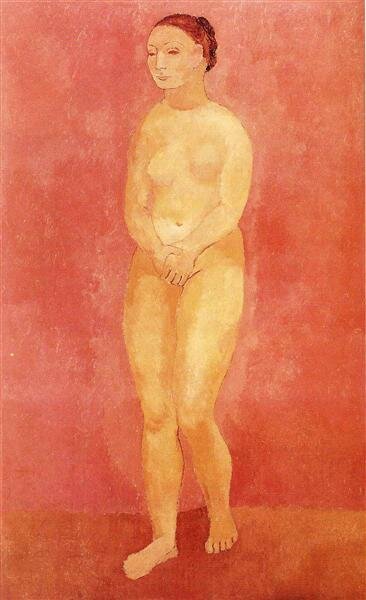
Pablo Picasso, 1906, Expressionism
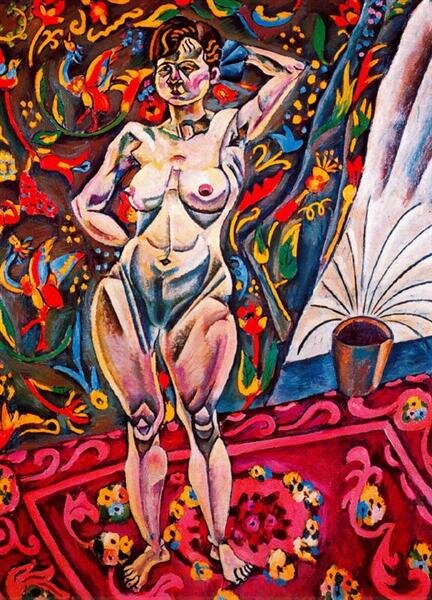
Joan Miro
1918
Cubism, Fauvism
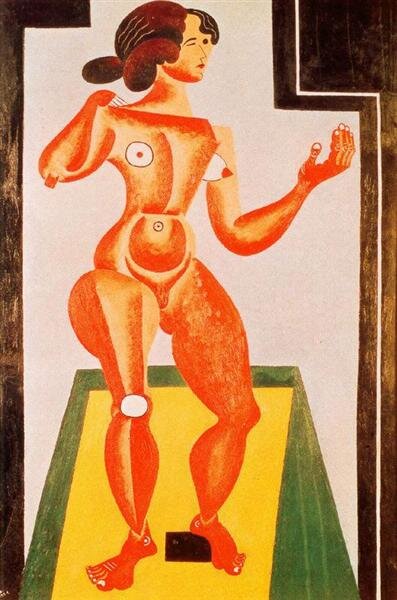
Joan Miro
1921
Perls Galleries, New York City, NY, US

Waterhouse, c. 1914
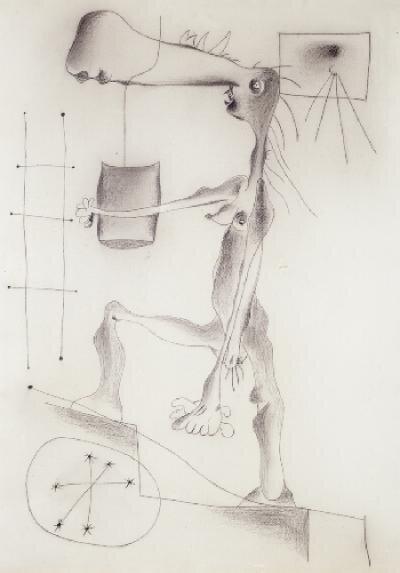
Joan Miro
1937; Paris, France
Joan Miró Foundation, Barcelona, Spain
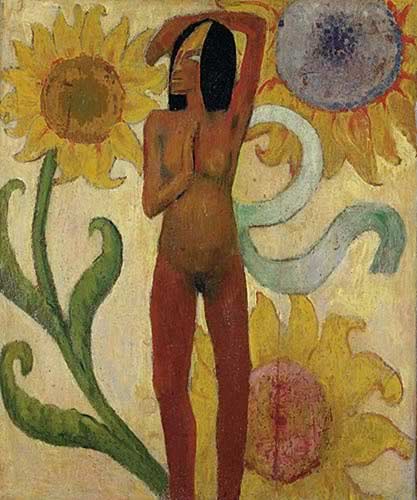
Gaugin, 1889

Gaugin, 1893, Hermitage Museum

Félicien Rops (1833-1898), Musée de Beaux Arts Montréal
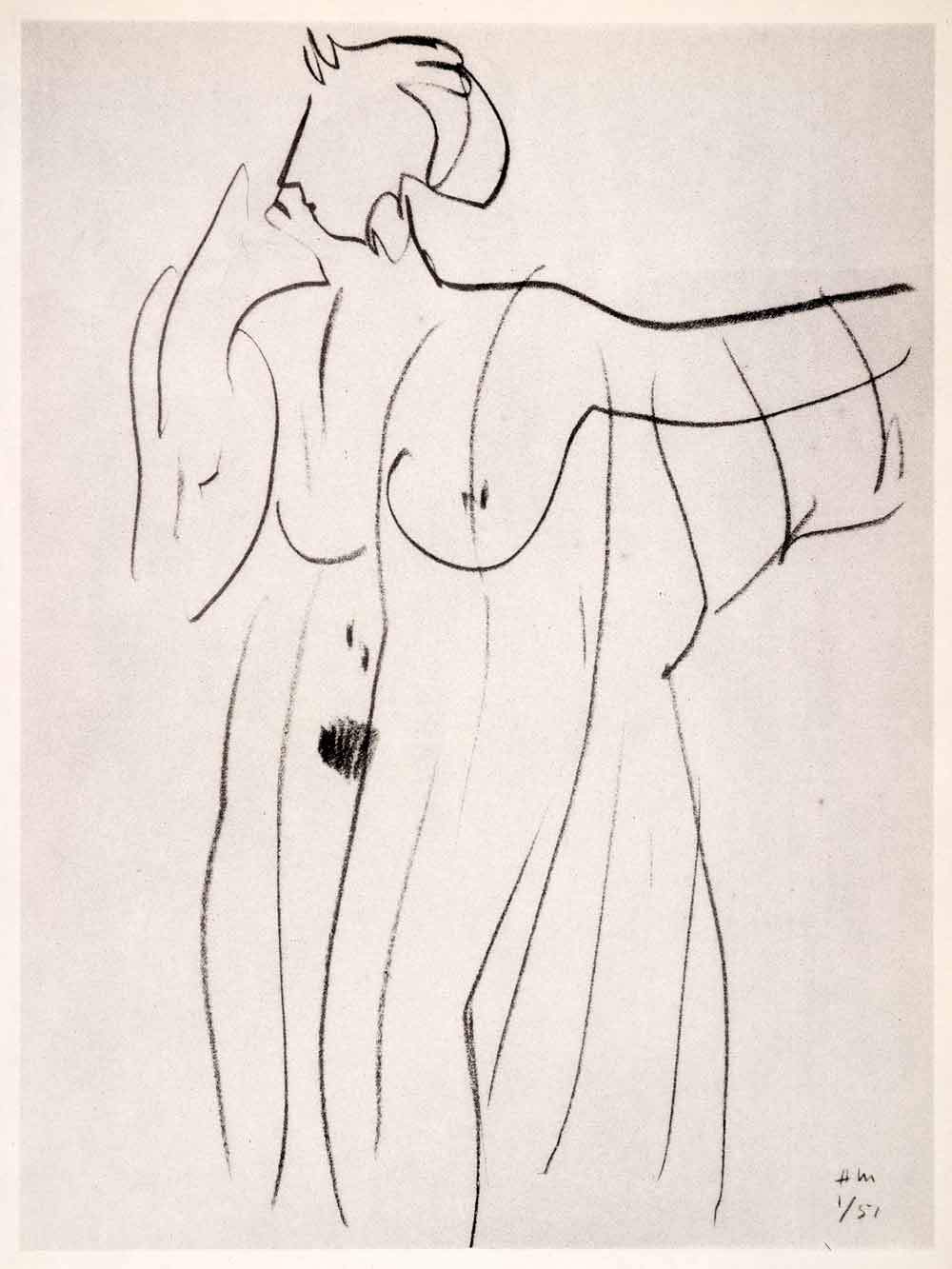
Henri Matisse, 1969
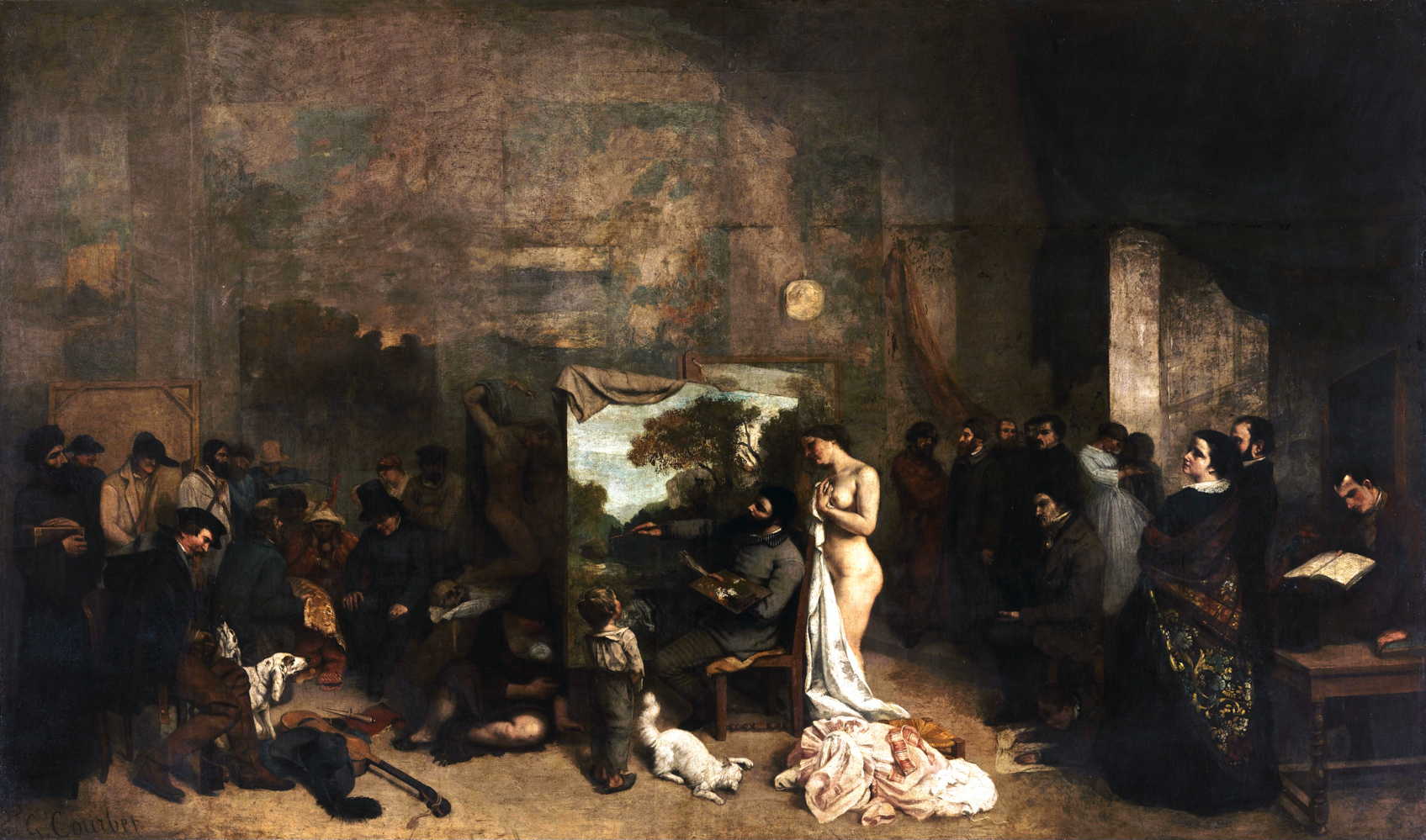
Gustave Courbet, 1855
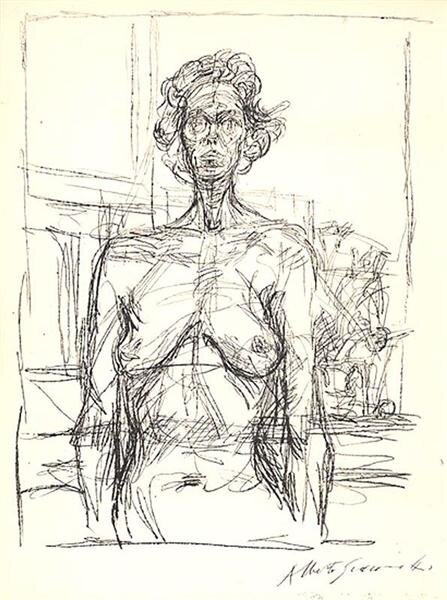
Alberto Giacometti, 1960
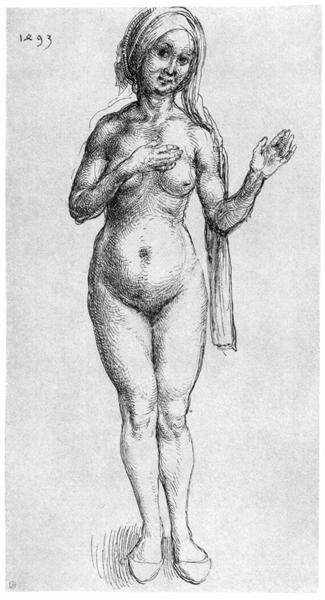
Durer
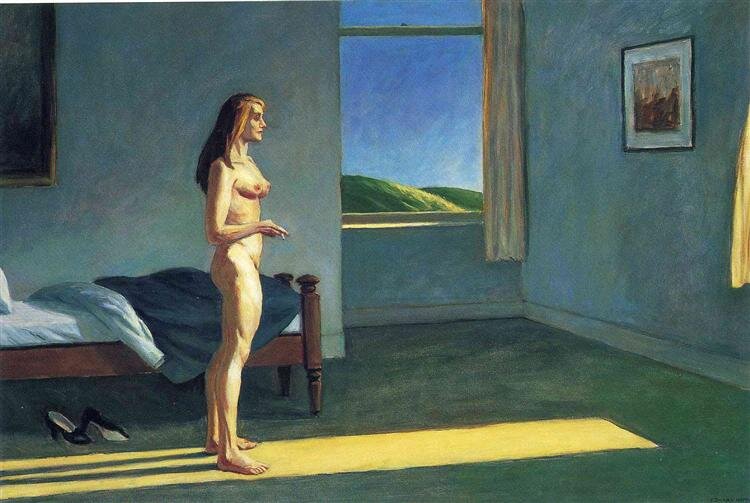
Edward Hopper
1961

Gerhard Richter
1992
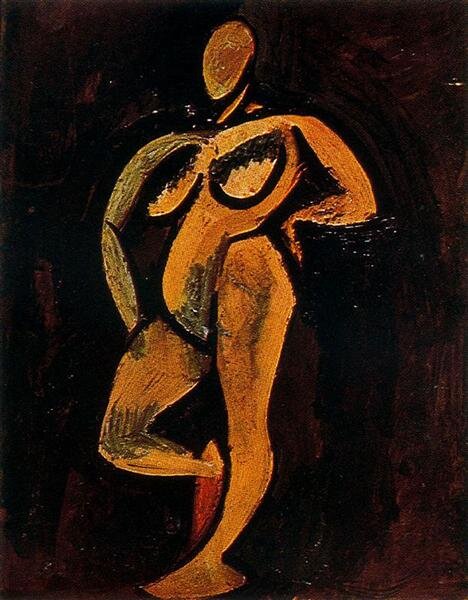
Pablo Picasso, 1908
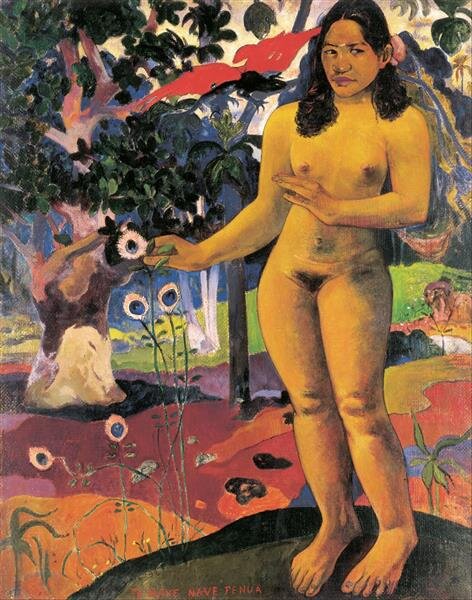
Paul Gauguin, 1892, Post-Impressionism, Ohara Museum of Art, Kurashiki, Japan
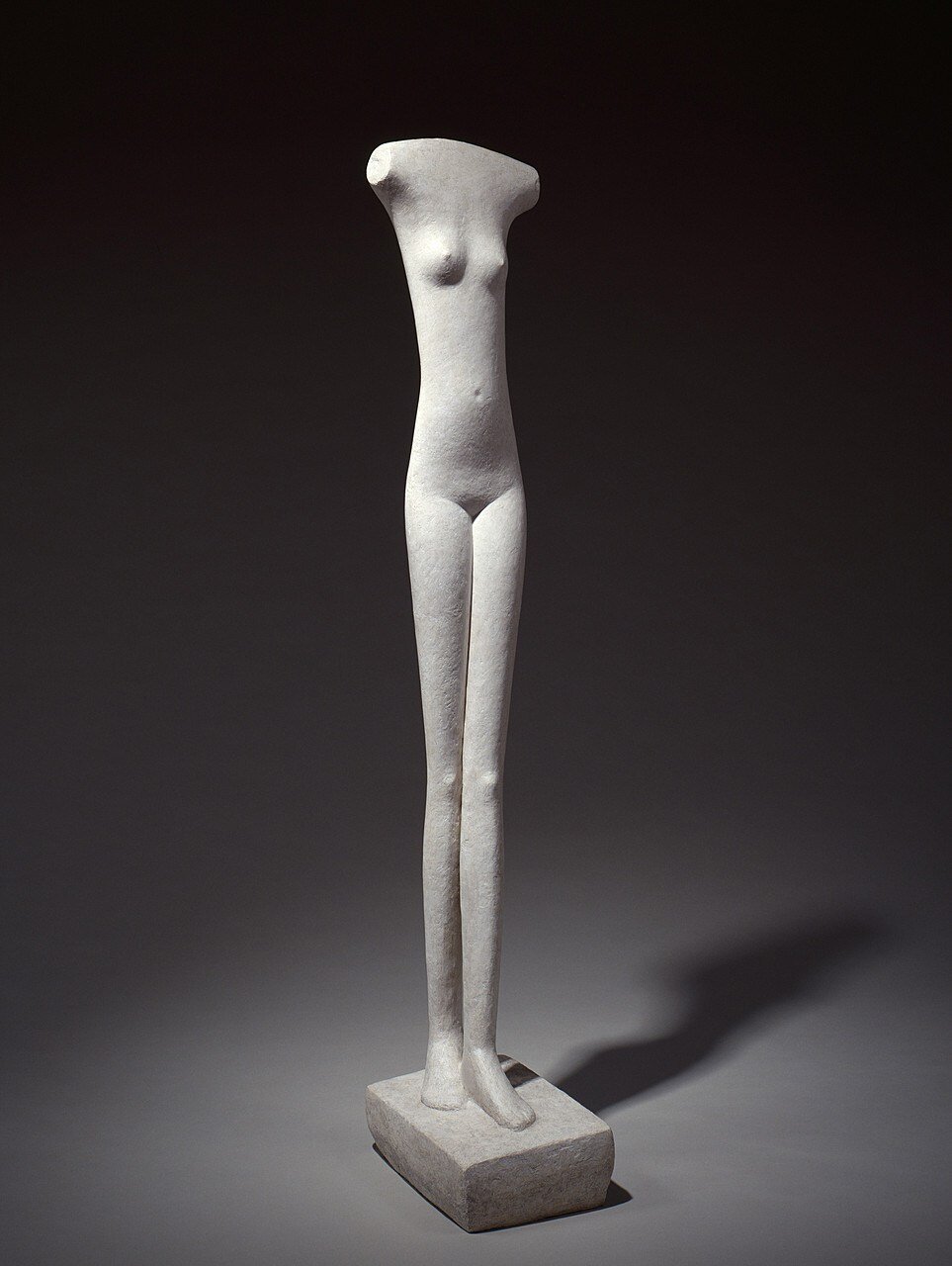
Alberto Giacometti, 1932, Plaster and iron wire, The Solomon R. Guggenheim Foundation Peggy Guggenheim Collection, Venice, 1976
"This sculpture is conceived in the rational and formally serene mode Alberto Giacometti pursued concurrently with his dark Surrealist explorations of the subconscious. Woman Walking has none of the ferocity of Woman with Her Throat Cut, though both works were executed during the same period. The graceful, calm plaster seems to have its source in the frontal figures of ancient Egypt, posed with left feet slightly ahead of right in fearless confrontation of death. Despite the pose, Woman Walking, like its Egyptian ancestors, conveys no sense of movement. The plane of the body is only slightly inflected by the projections of breasts, belly, and thighs. The long, thin legs are smooth, solid, and columnar. In its flatness, the work evokes the traditions of the highly simplified Cycladic figure and the geometric kouros of archaic Greece. Giacometti is known to have copied works of art at the Louvre, during his travels, and even from reproductions, showing a preference for models characterized by a high degree of stylization. Woman Walking also reflects Giacometti’s awareness of twentieth-century sculptors, particularly Constantin Brancusi and Alexander Archipenko.
Another plaster version of the sculpture, also probably dating from 1932 (formerly Collection Erica Brausen, London), is distinguished by a triangular cavity in the upper abdomen. The generalization and distortion of form in these works forecast Giacometti’s development of the elongated style for which he is best known." — Lucy Flint
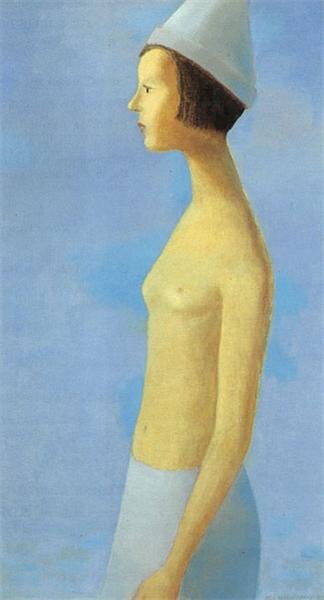
Jean Paul Lemieux, 1963
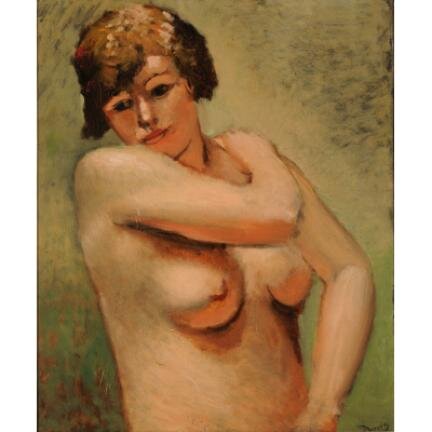
André Derain, 1932-33, Gift of Herman H. Levy, McMaster Museum of Art
Dimensions: Overall: 63.5 x 50.9 cm (25 x 20 in.)
Medium: Oil on canvas






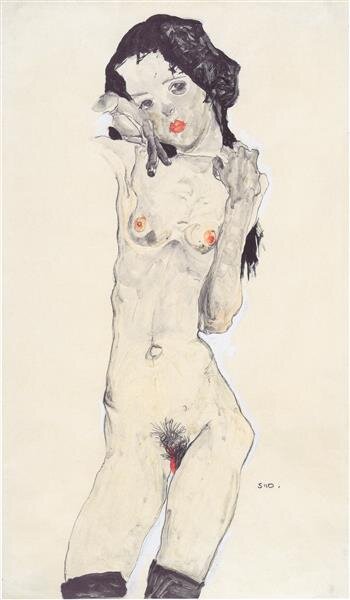
Egon Schiele, 1910, Expressionism, Albertina, Vienna, Austria

Paul Gauguin, 1884, Amagerbro, Copenhagen, Denmark, Impressionism

Zinaida Serebriakova, c.1920, Art Nouveau (Modern)
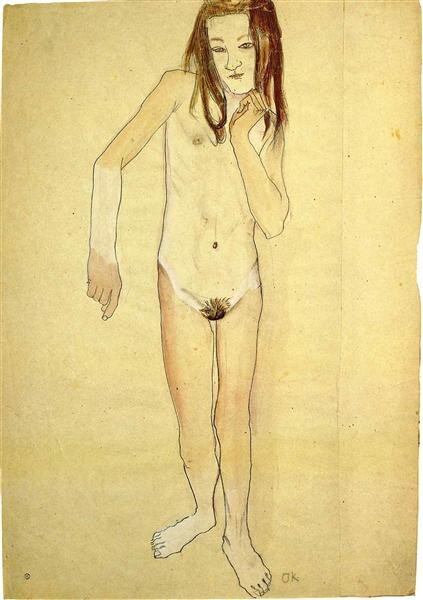
Oskar Kokoschka, 1907, Expressionism
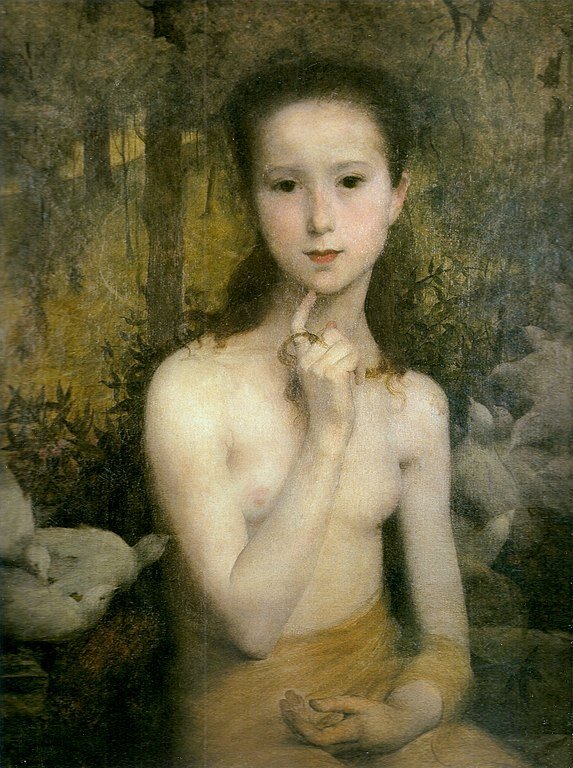
Eliseu Visconti (1866–1944) 1898: Museu Nacional de Belas Artes

Pablo Picasso, 1905, Expressionism
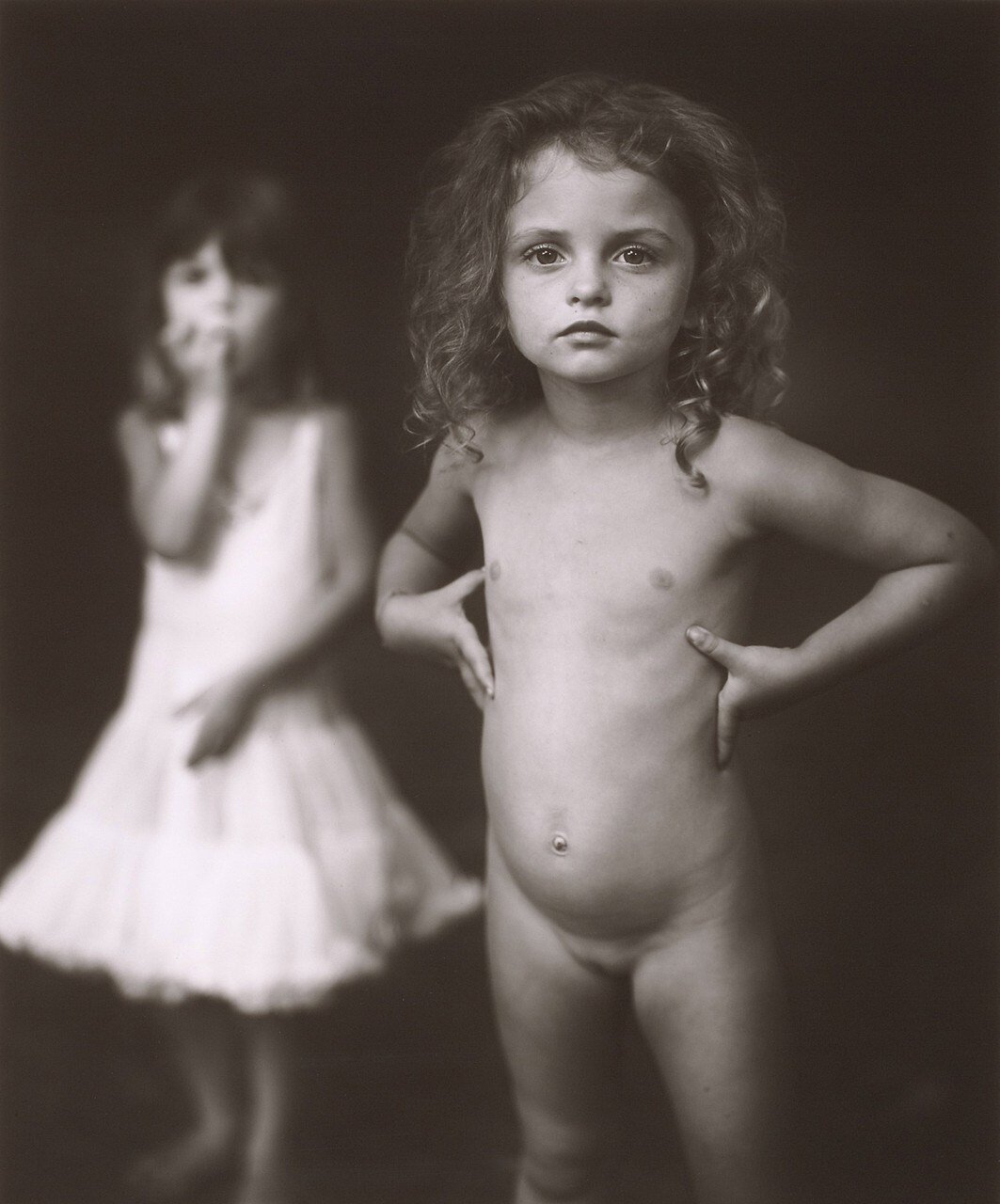
Sally Mann, 1989, Gelatin silver enlargement print, Solomon R. Guggenheim Museum, New York Gift, The Bohen Foundation, 2001

Sally Mann, 1990, Gelatin silver enlargement print, Solomon R. Guggenheim Museum, New York Gift, The Bohen Foundation, 2001
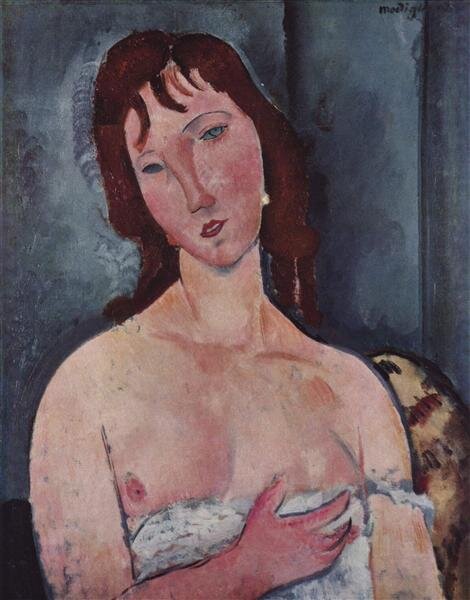
Amedeo Modigliani, c.1918, Expressionism, E.G. Bührle Foundation, Zürich, Switzerland

Egon Schiele, c.1909, Art Nouveau (Modern)

Amedeo Modigliani, 1918, Expressionism
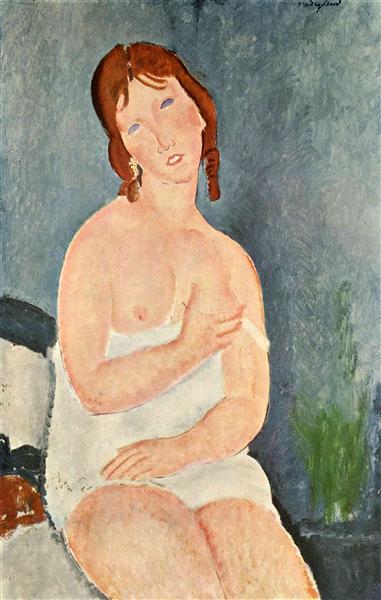
1917









Henri Matisse
1952

Vincent van Gogh, 1882; The Hague, Netherlands: Van Gogh Museum, Amsterdam, Netherlands

Georgia O'Keeffe, 1917

Pablo Picasso, 1906, Expressionism

Rembrandt, c.1631, Baroque, British Museum, London, UK

Alice Neel, 1973, Expressionism

Pablo Picasso, 1932, Tate Modern, London, UK

Pablo Picasso, 1925, Cubism, Norton Simon Museum, Pasadena, CA, US

Rembrandt, 1658

George Luks

Pierre-Auguste Renoir
1909

Marc Chagall, 1911

Egon Schiele, 1911, Art Nouveau, Gemeentemuseum den Haag, Hague, Netherlands

Amedeo Modigliani, c.1916, Expressionism, Courtauld Institute of Art, London, UK

Amedeo Modigliani, c.1908, Expressionism

Joan Miro
1932
Joan Miró Foundation, Barcelona, Spain

Pablo Picasso, 1971, Surrealism

Amedeo Modigliani, 1917, Expressionism

Amedeo Modigliani, 1917

Amedeo Modigliani, 1917, Expressionism, Lille Métropole Museum of Modern, Contemporary and Outsider Art (LaM), Lille, France

Rembrandt, c.1637, Baroque, Museum Boijmans van Beuningen, Rotterdam, Netherlands

Pablo Picasso, 1956, Expressionism, Surrealism

Pablo Picasso, 1909, Cubism, Hermitage Museum, Saint Petersburg, Russia

Oskar Kokoschka,1913, Expressionism

Eugène Delacroix (1798–1863): Louvre Museum

Kansuke Yamamoto, 1950, Surrealism

Georg Baselitz, 1979, Neo-Expressionism

Georgia O'Keeffe, 1917

Diego Rivera, 1944, Art Deco

Paul Gauguin, 1893 or 1894, private collection



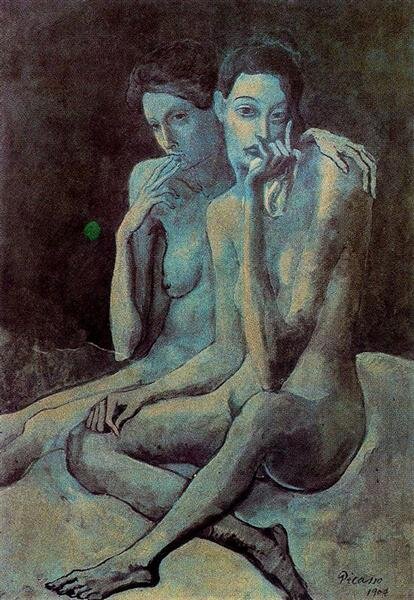
Picasso, 1904

Rene Magritte, 1946; Brussels, Belgium, Surrealism
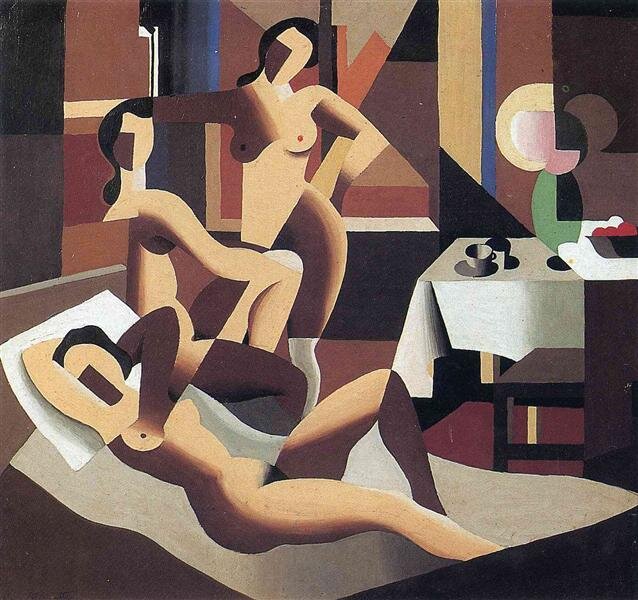
Rene Magritte, 1923; Brussels, Belgium, Cubism
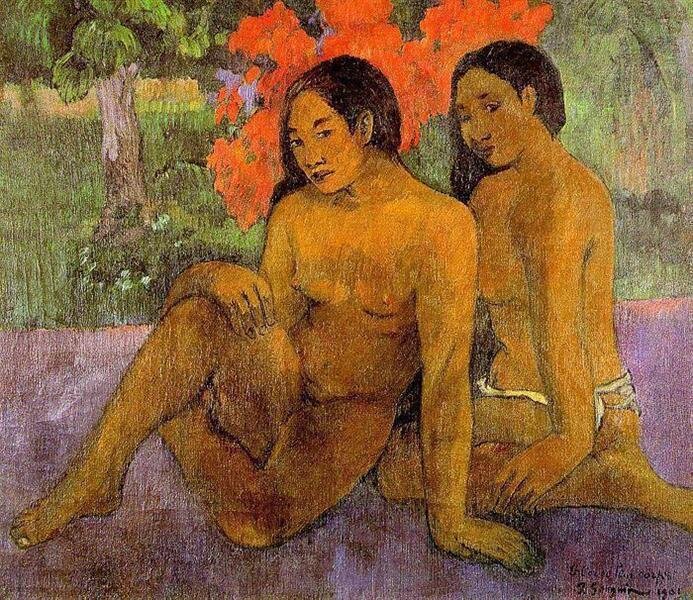
Paul Gauguin, 1901, Post-Impressionism , Musée d'Orsay, Paris, France
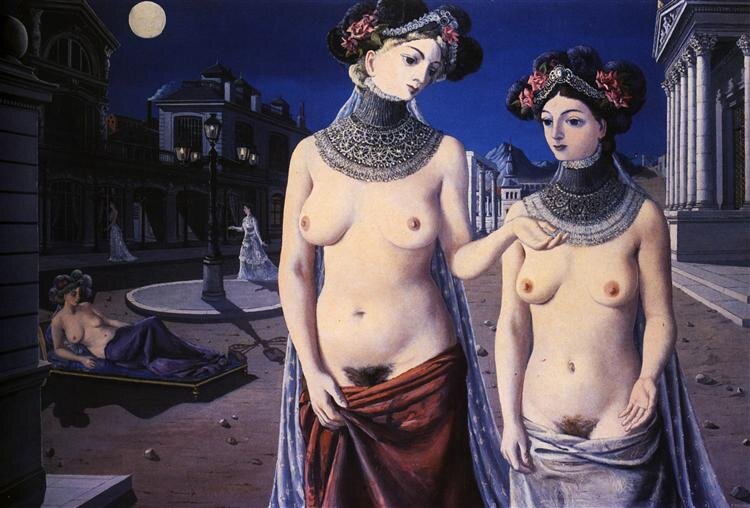
Paul Delvaux, 1947, Surrealism

Pablo Picasso, 1906, Expressionism
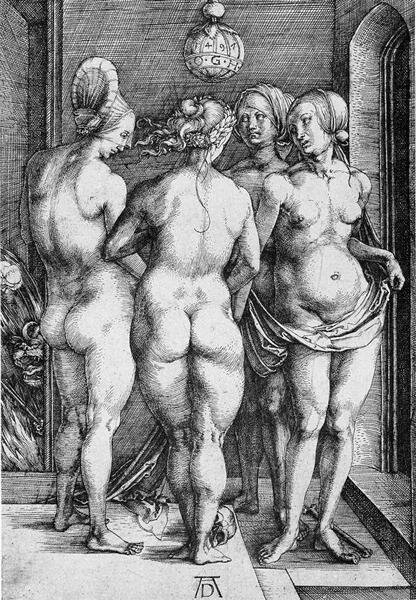
Albrecht Durer
1497

Peter Paul Rubens
c.1636
National Gallery, London, UK
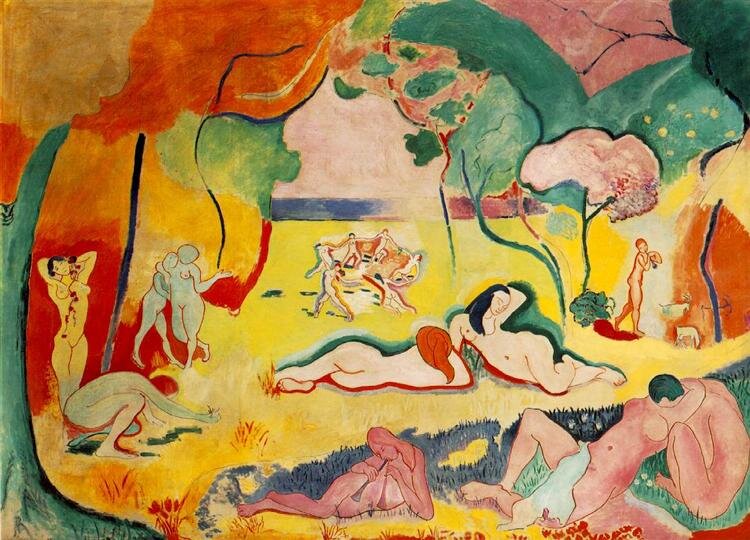
Henri Matisse
1905-6
Barnes Foundation, Lower Merion, PA, US

Henri Matisse
1910
Hermitage Museum, Saint Petersburg, Russia
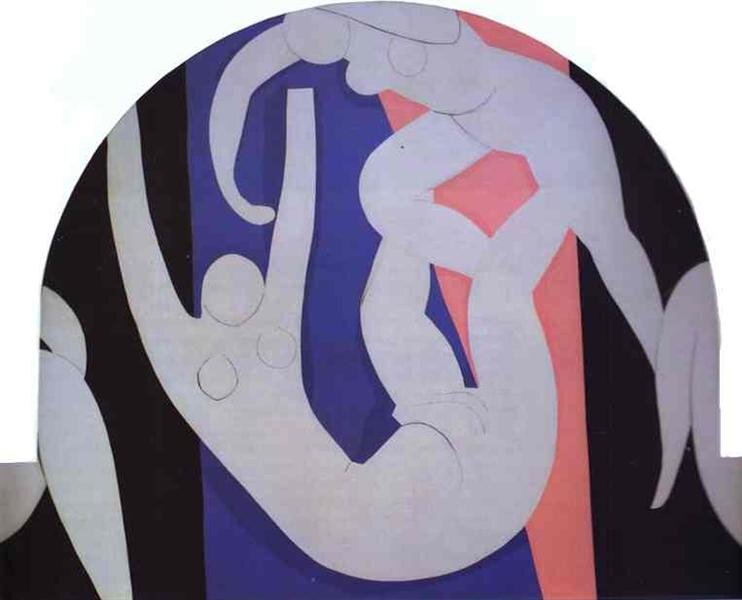
Henri Matisse
1932-33
Barnes Foundation, Lower Merion, PA, US
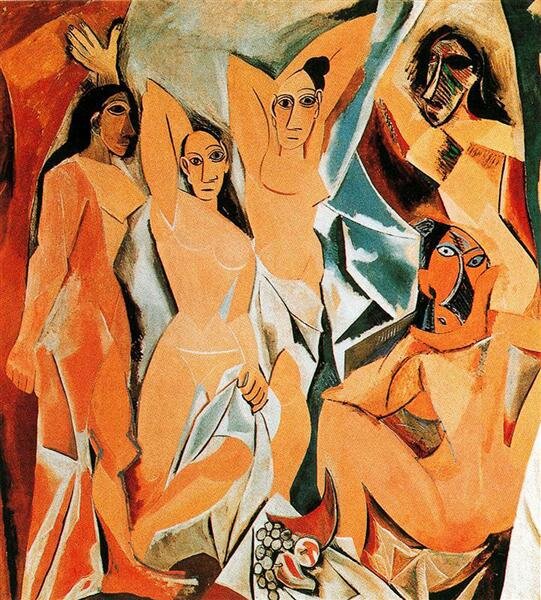
Pablo Picasso
Museum of Modern Art (MoMA), New York City, NY, US

Paul Delvaux
1938
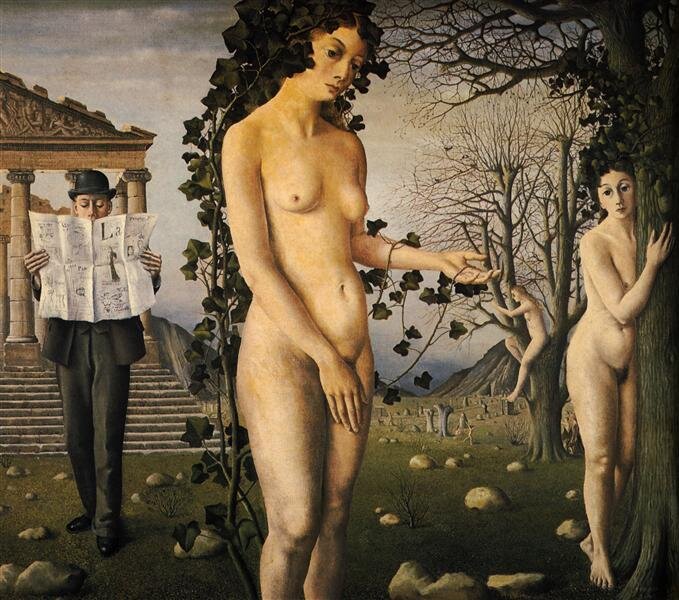
Paul Delvaux
1940
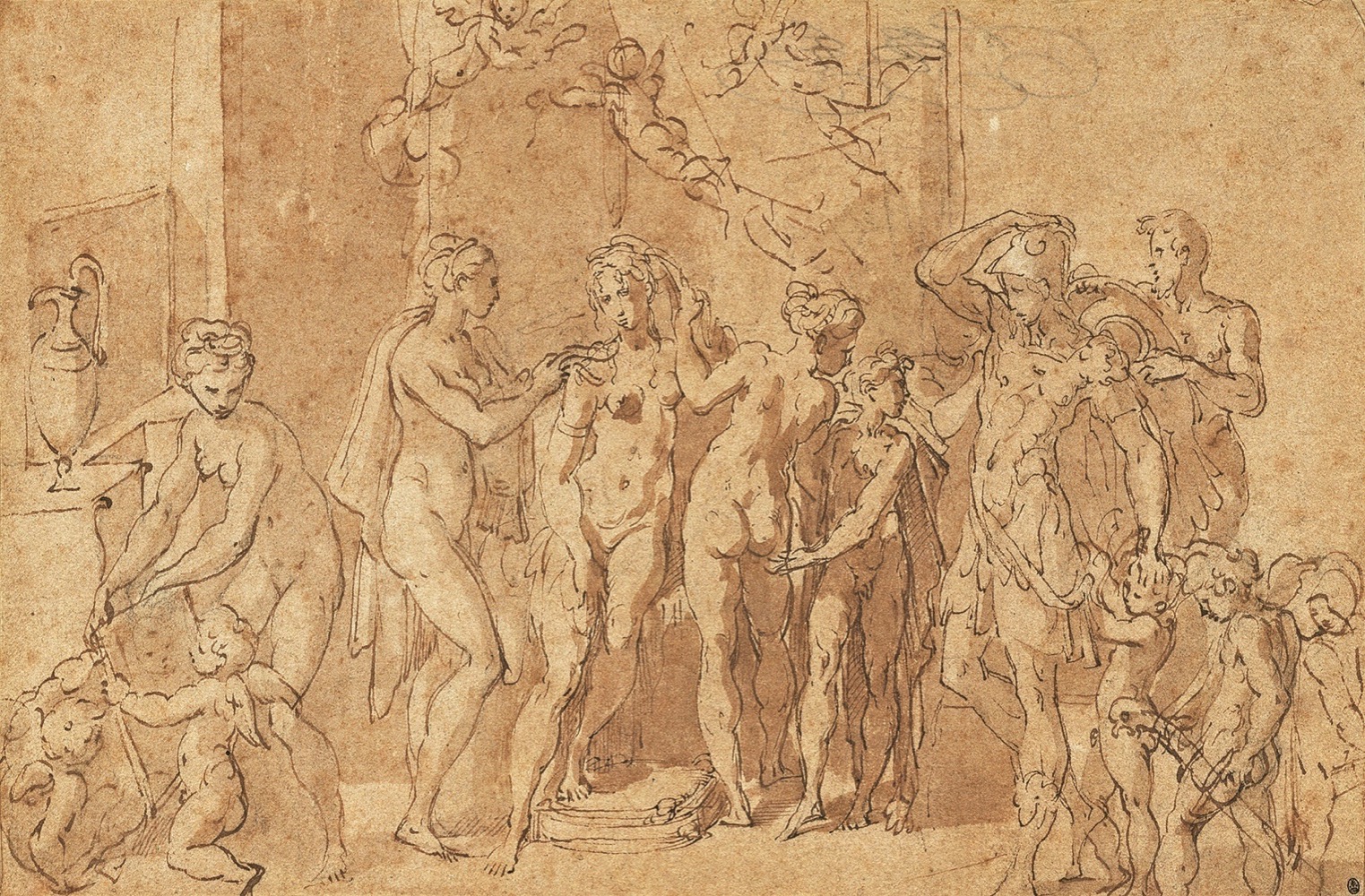
Francesco Mazzola, dit en it. Parmigianino, Musée de Beaux Arts Montréal

Oskar Kokoschka, 1912
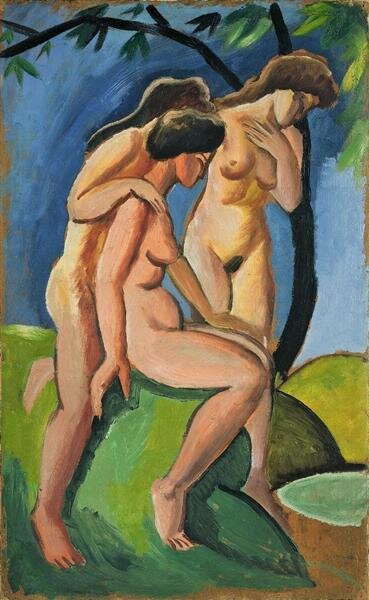
August Macke, 1913
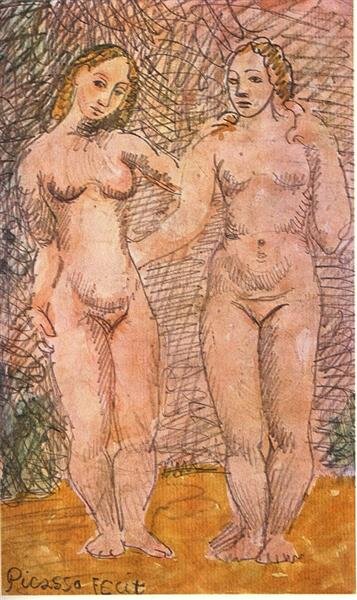
Picasso, 1906
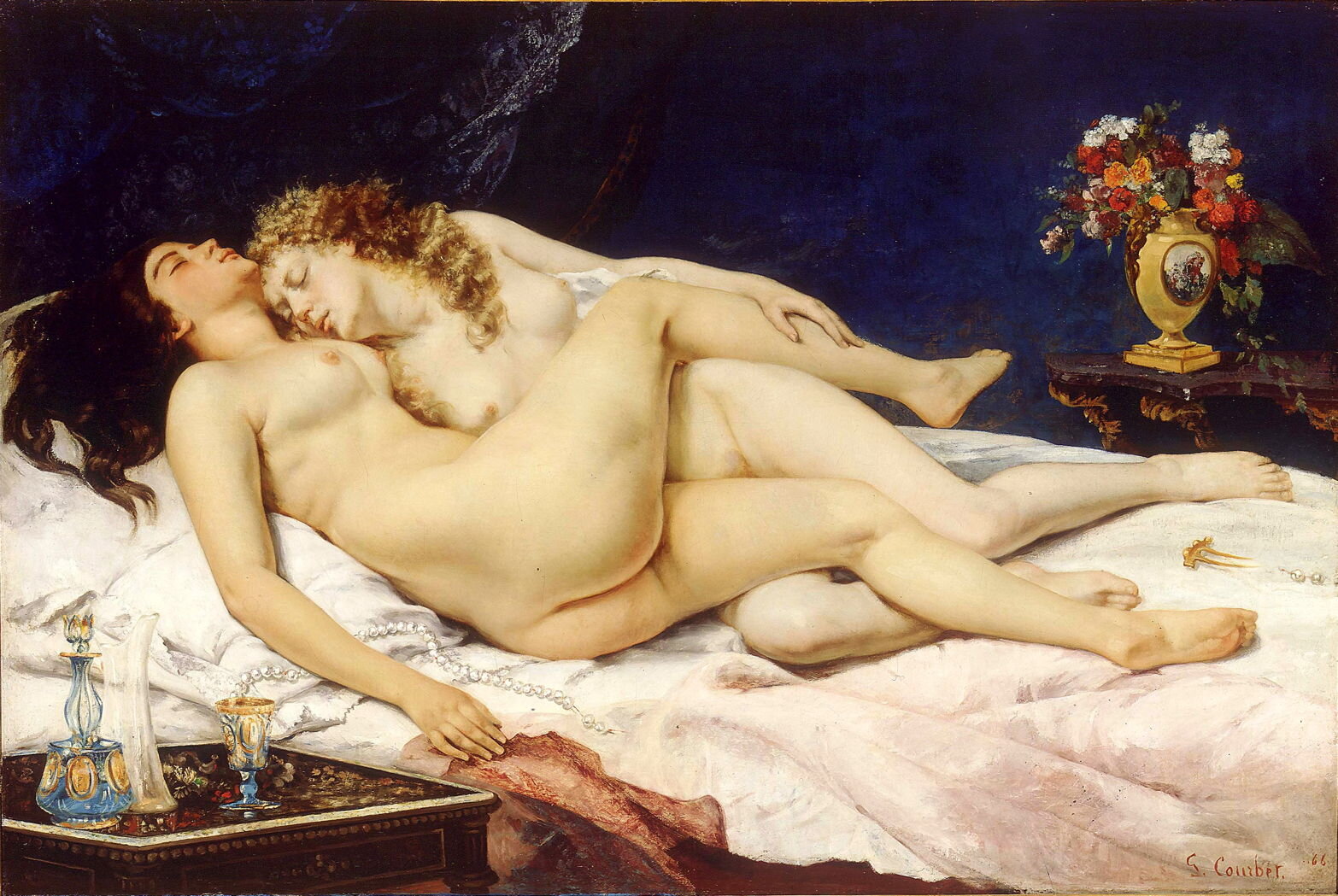
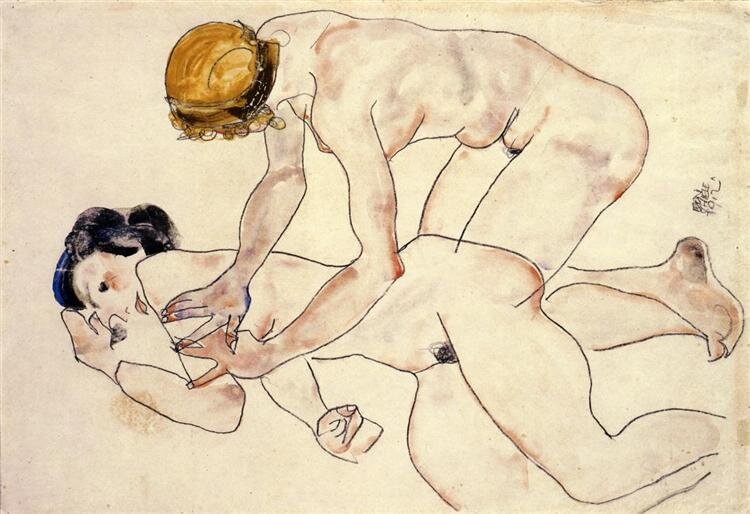
Egon Schiele, 1912
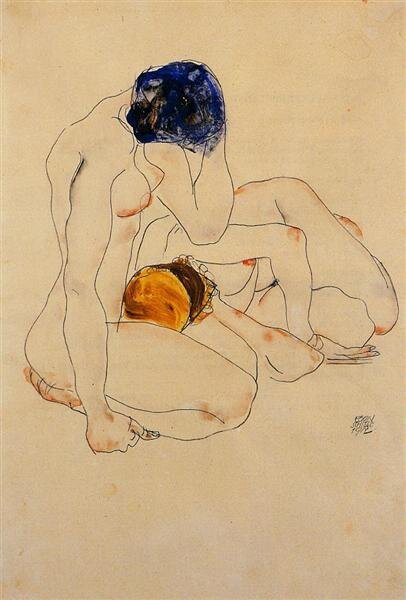
Egon Schiele, 1912

Egon Schiele, 1915, Expressionism, Albertina, Vienna, Austria
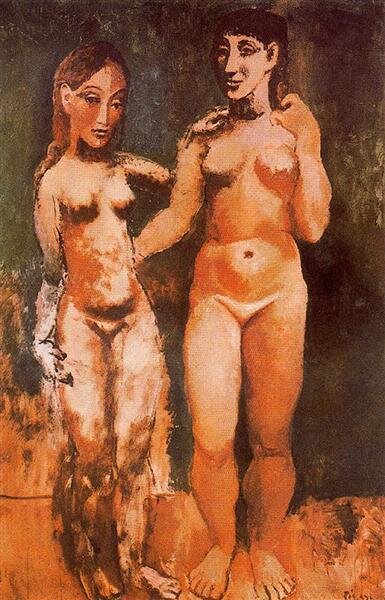
Pablo Picasso, 1906, Expressionism
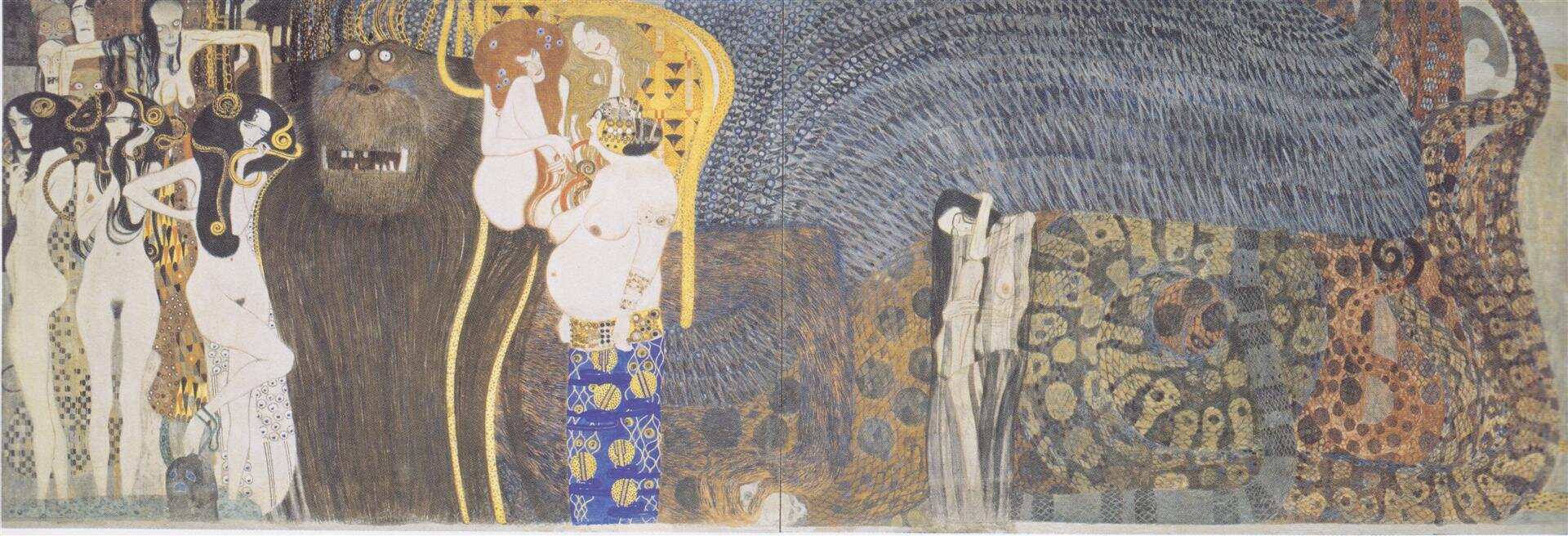
Gustav Klimt, 1902, Art Nouveau (Modern), Belvedere, Vienna, Austria

Gustav Klimt, 1902, Art Nouveau (Modern), Belvedere, Vienna, Austria

Hendrick van Balen (1575–1632) andJan Brueghel the Elder (1568–1625)
The Wedding of Thétis and Pélée: Louvre Museum


































